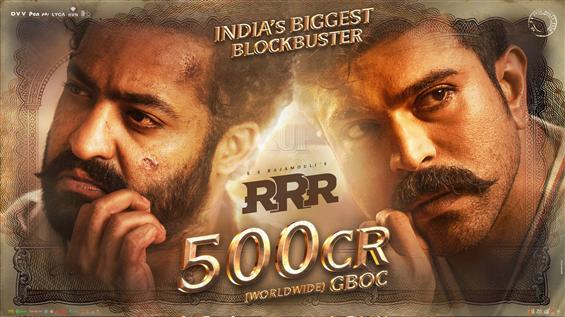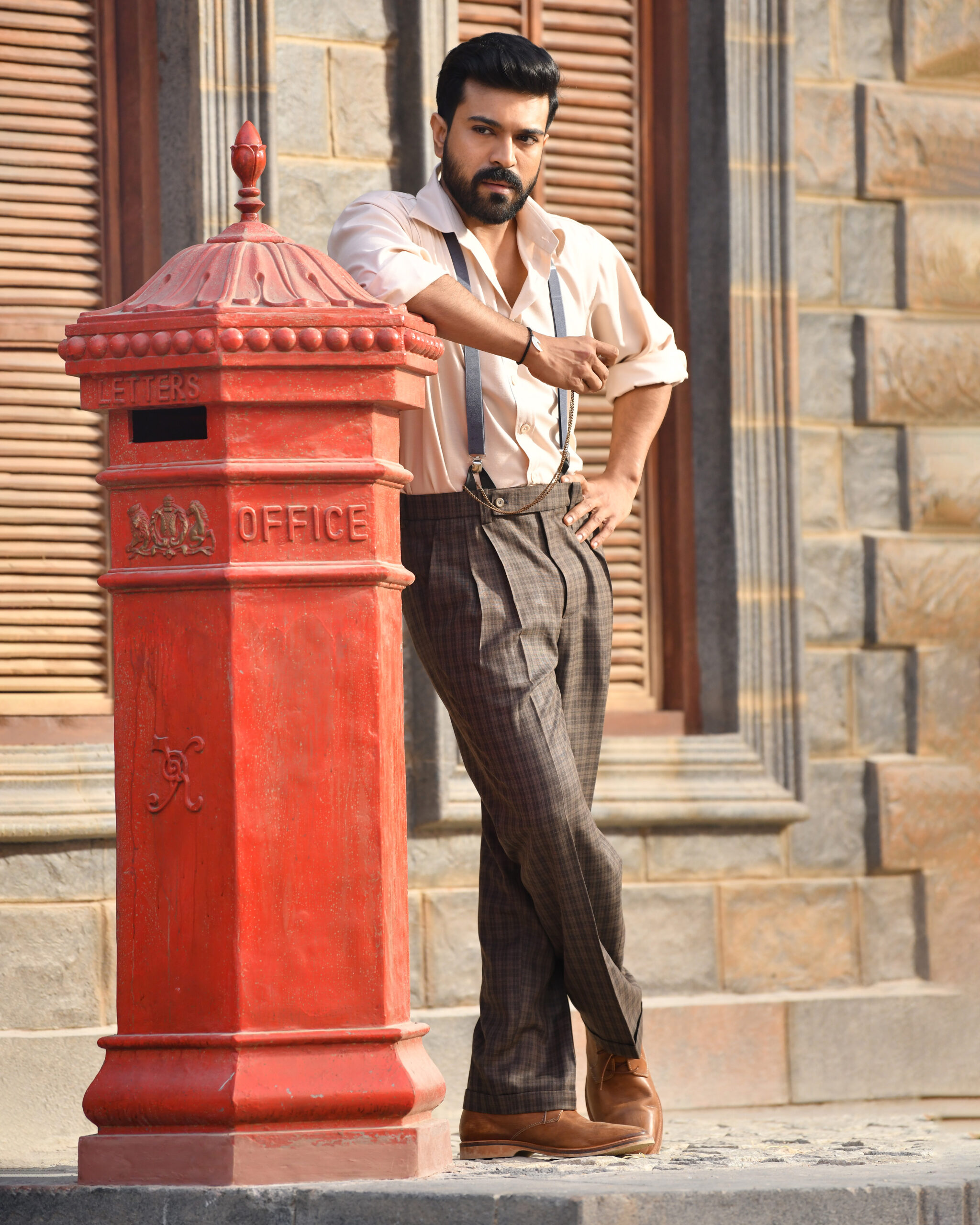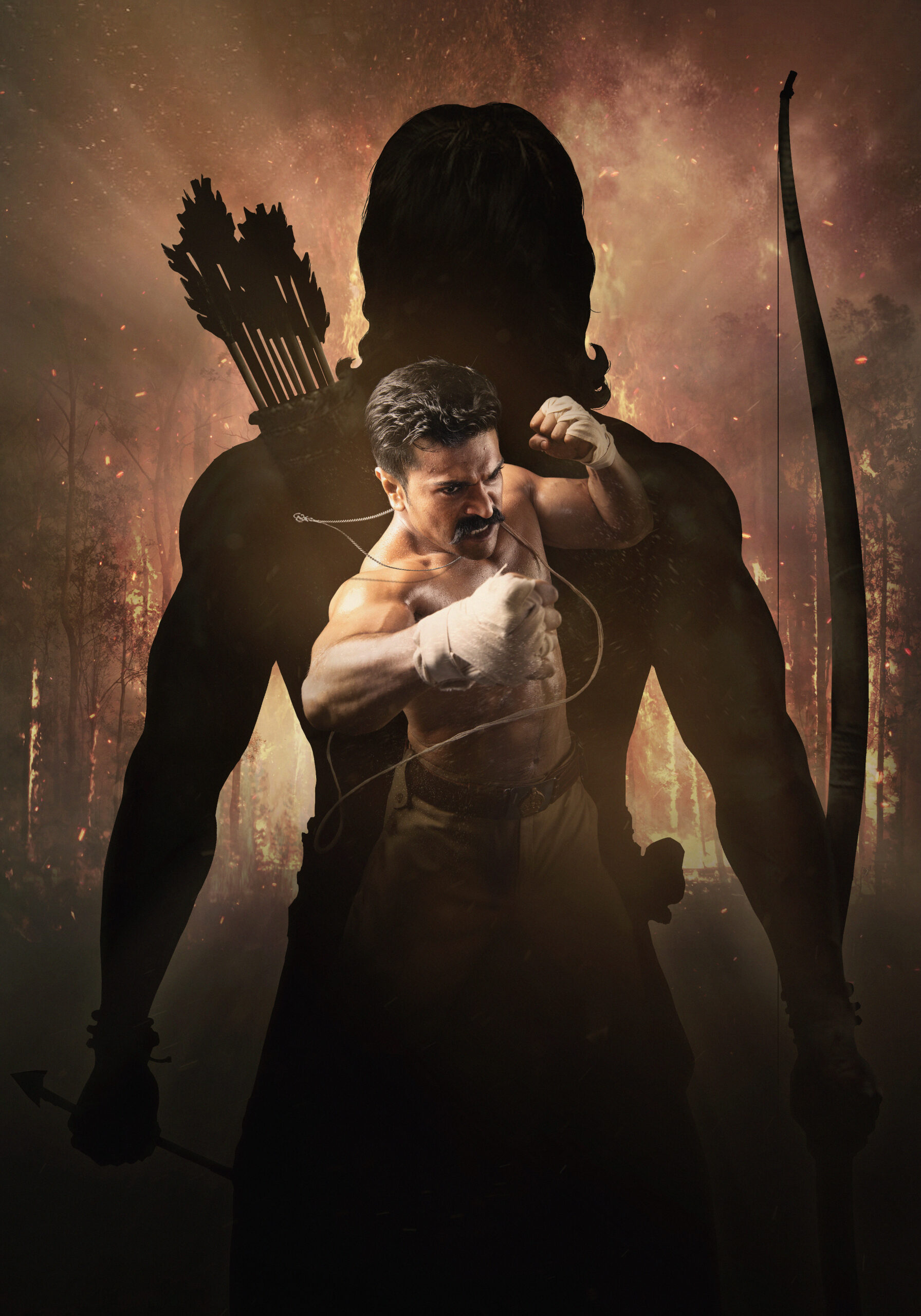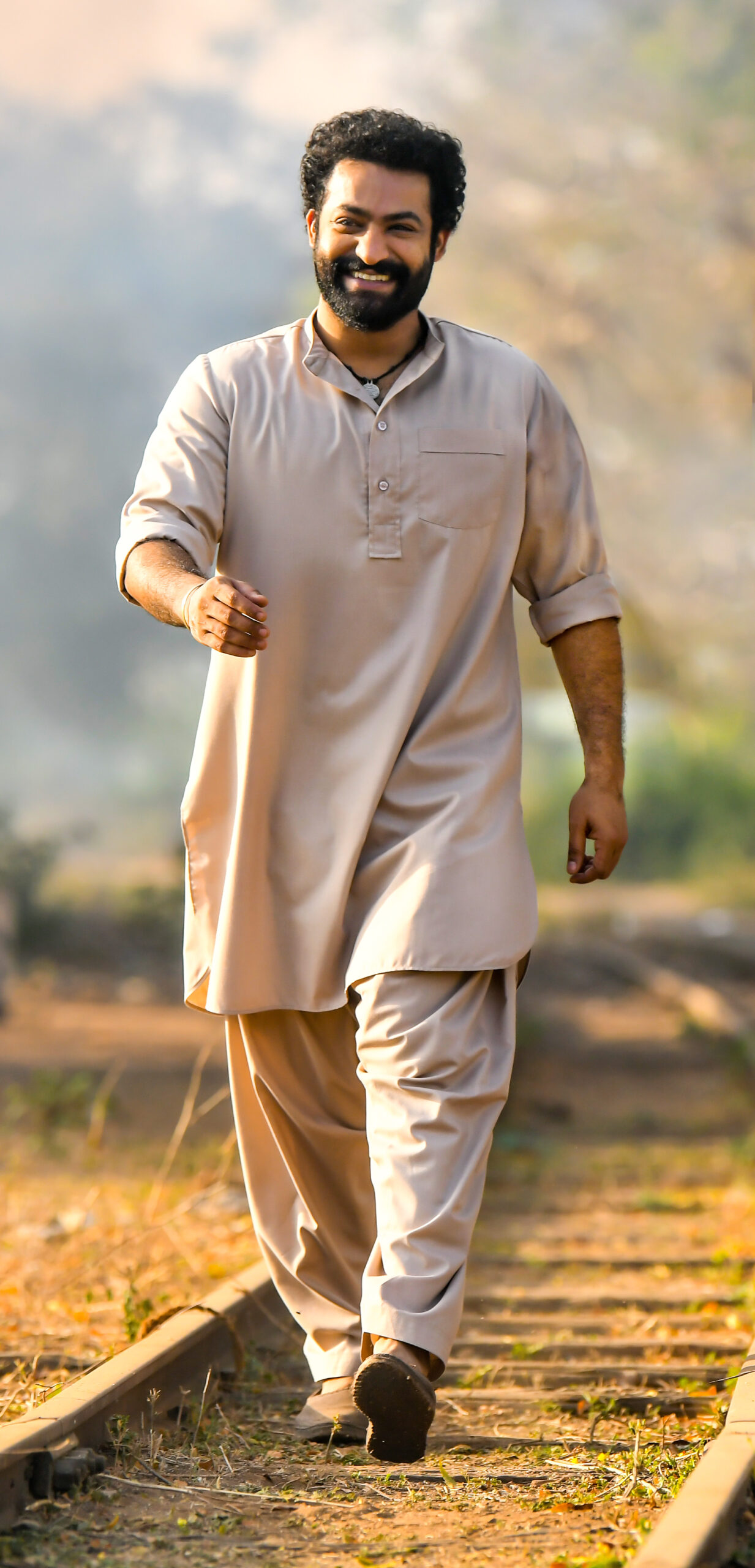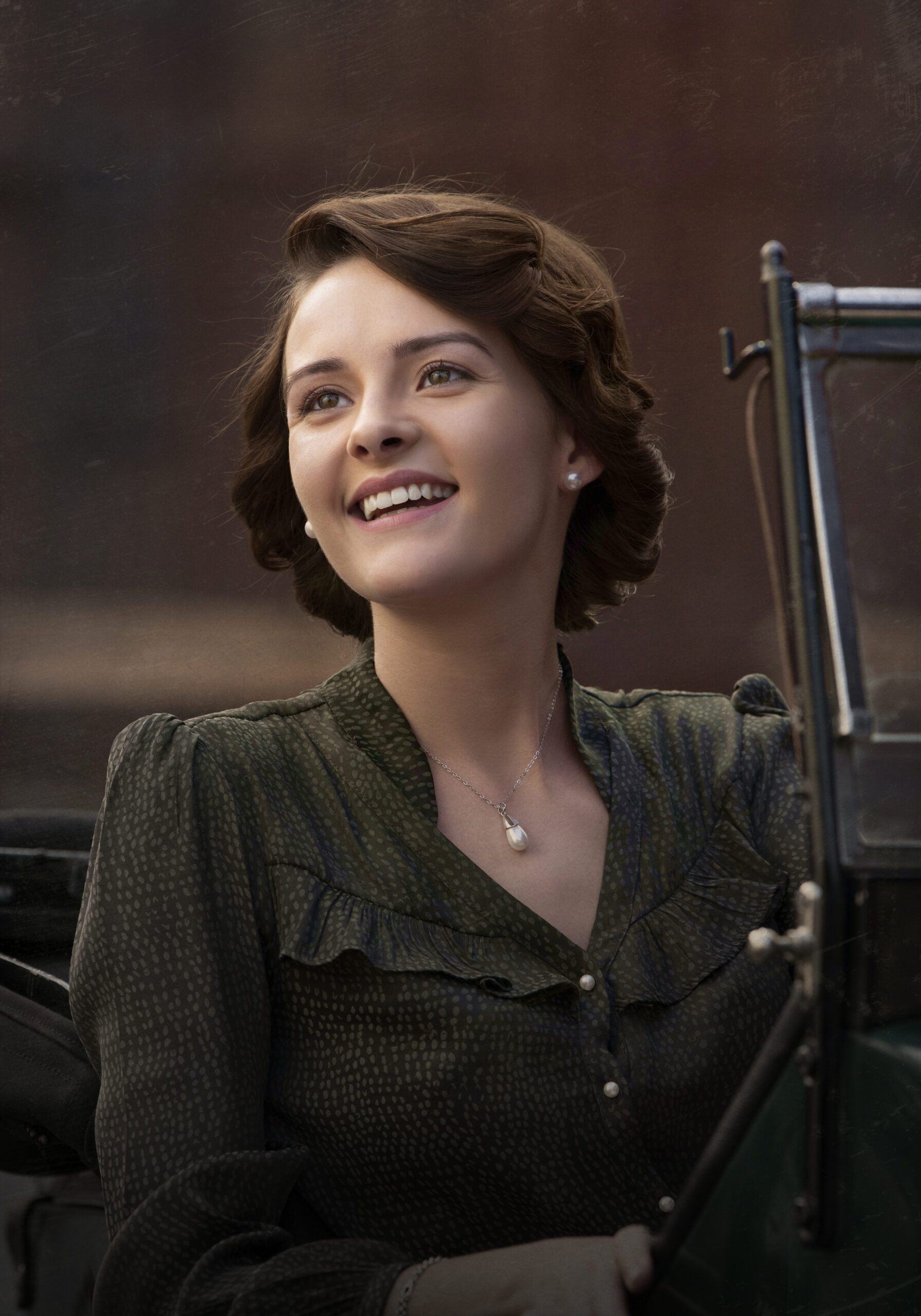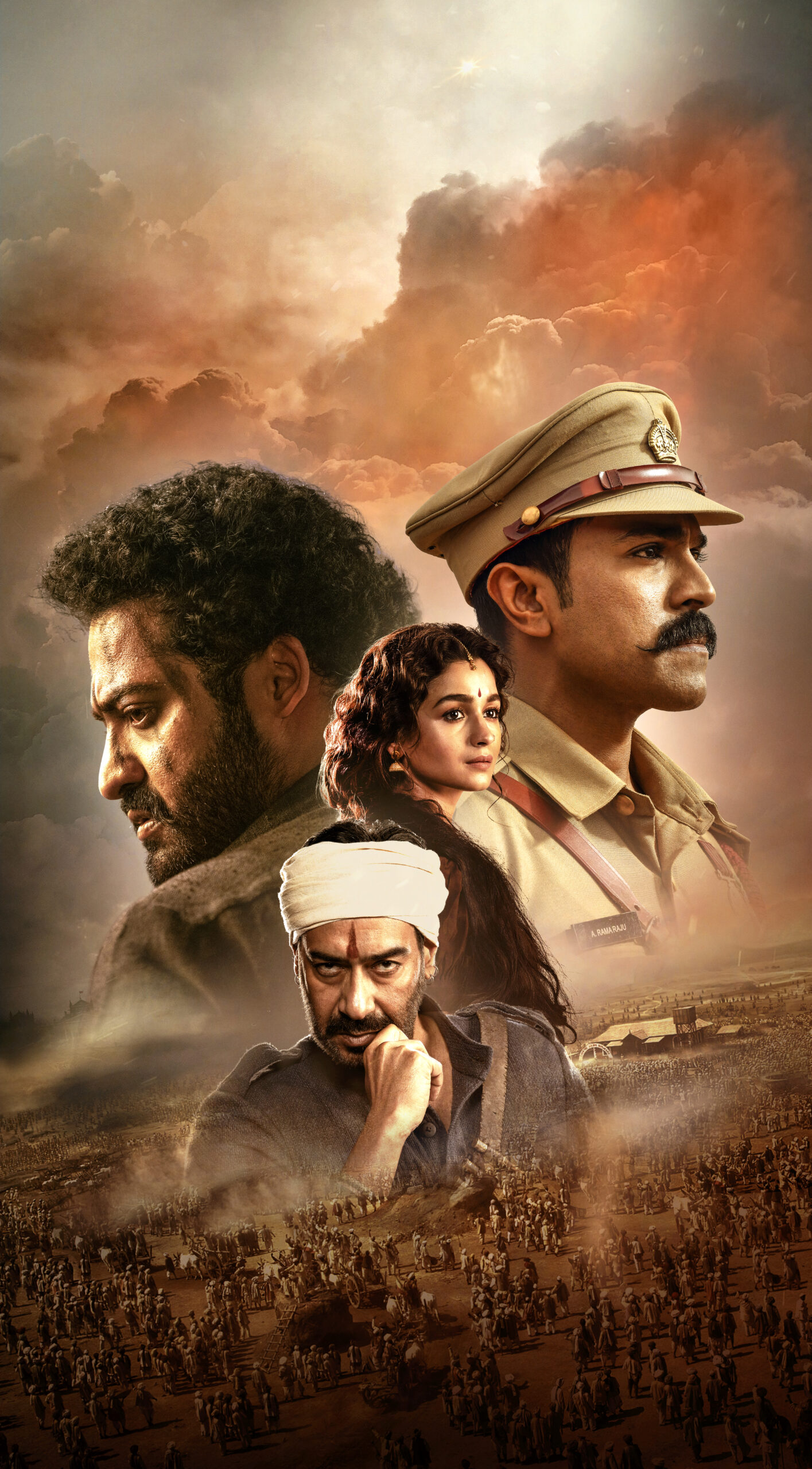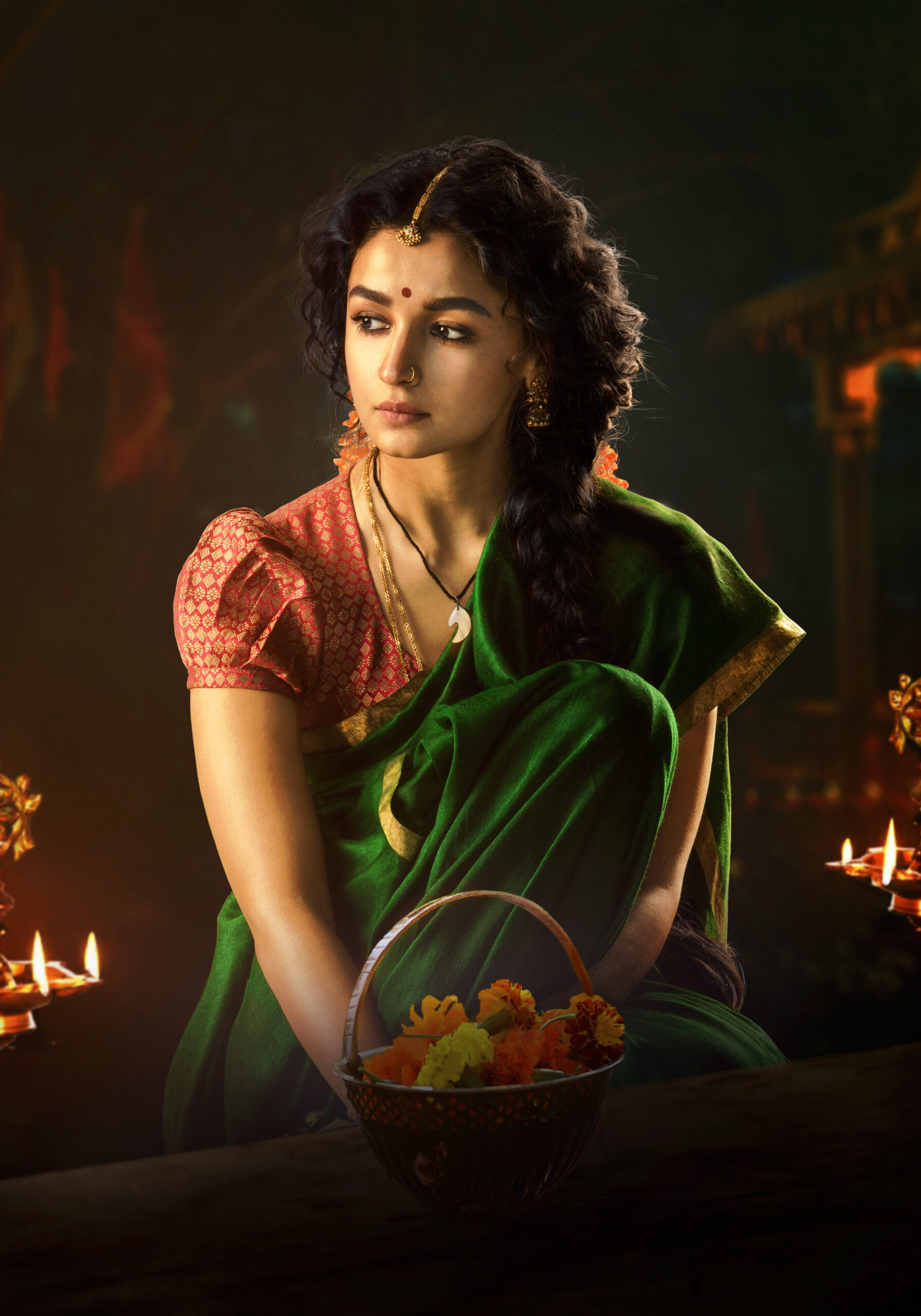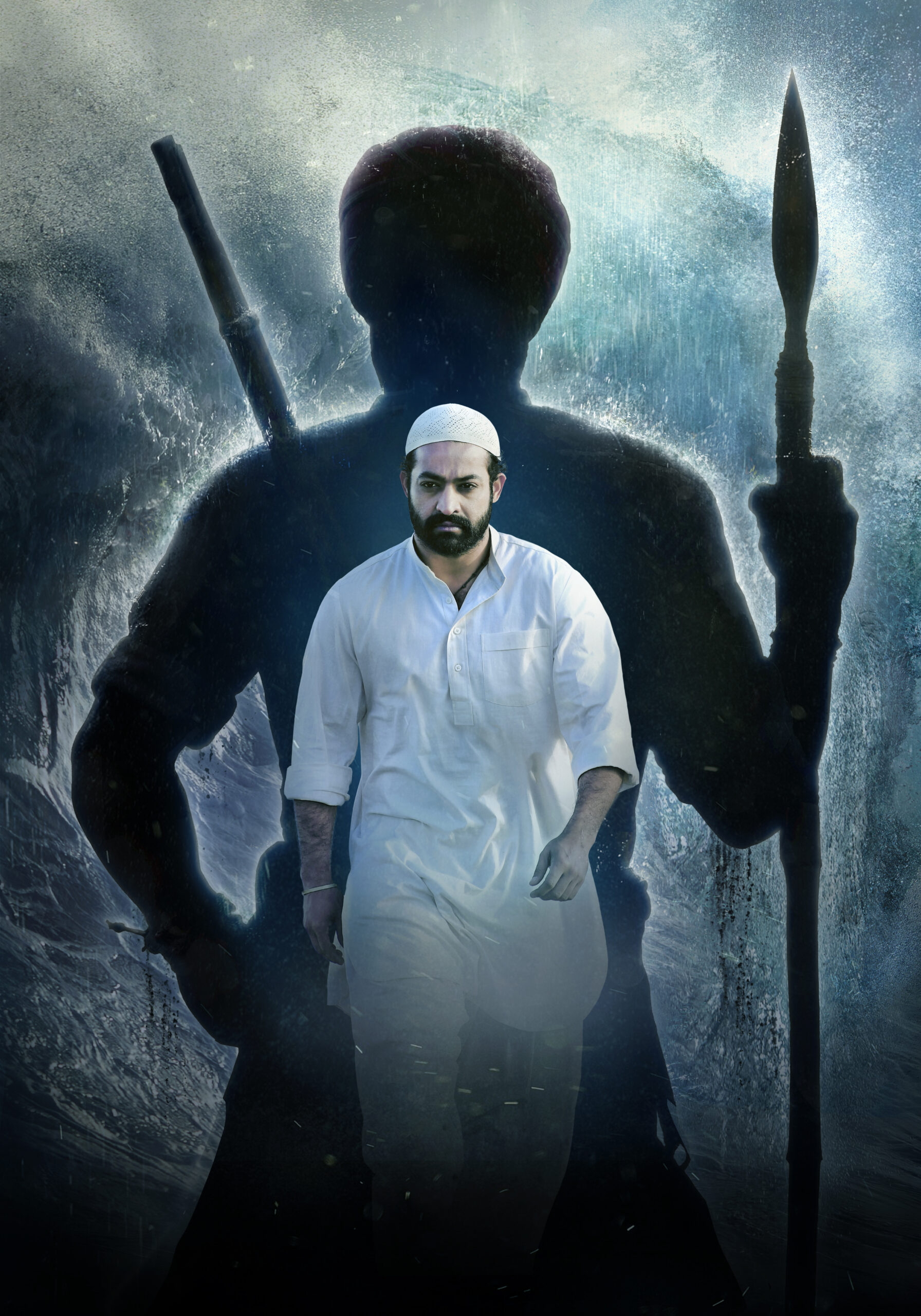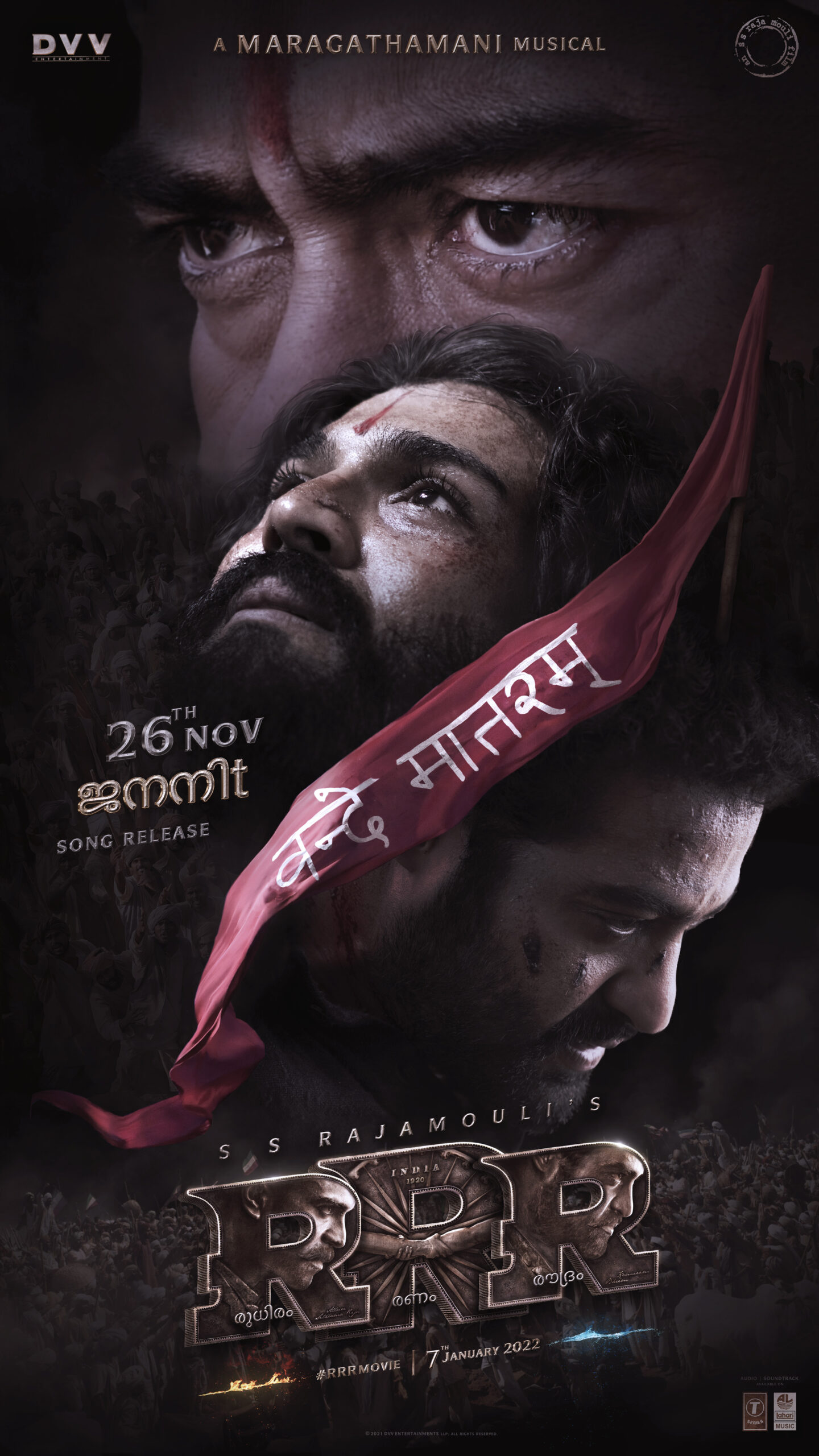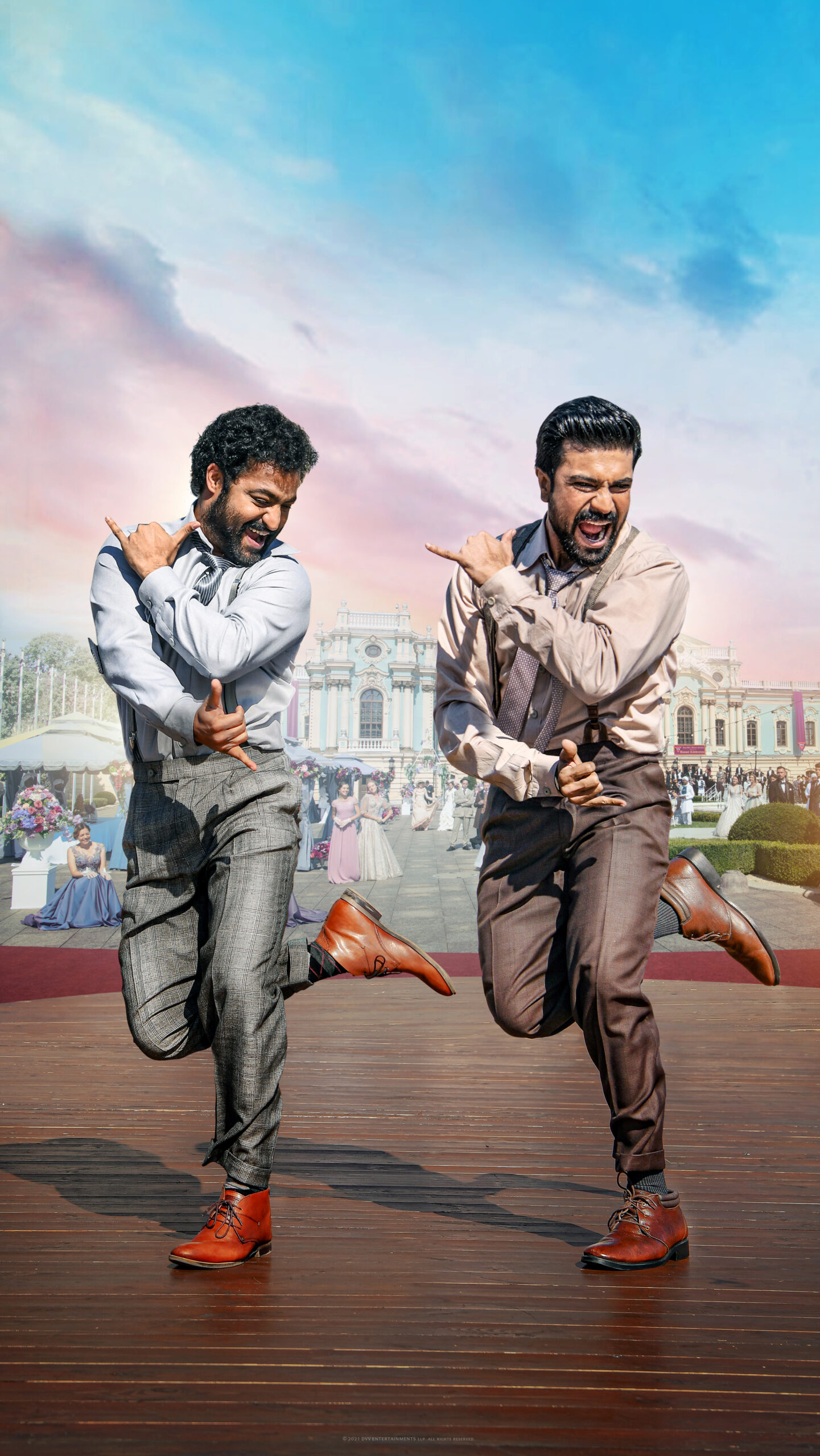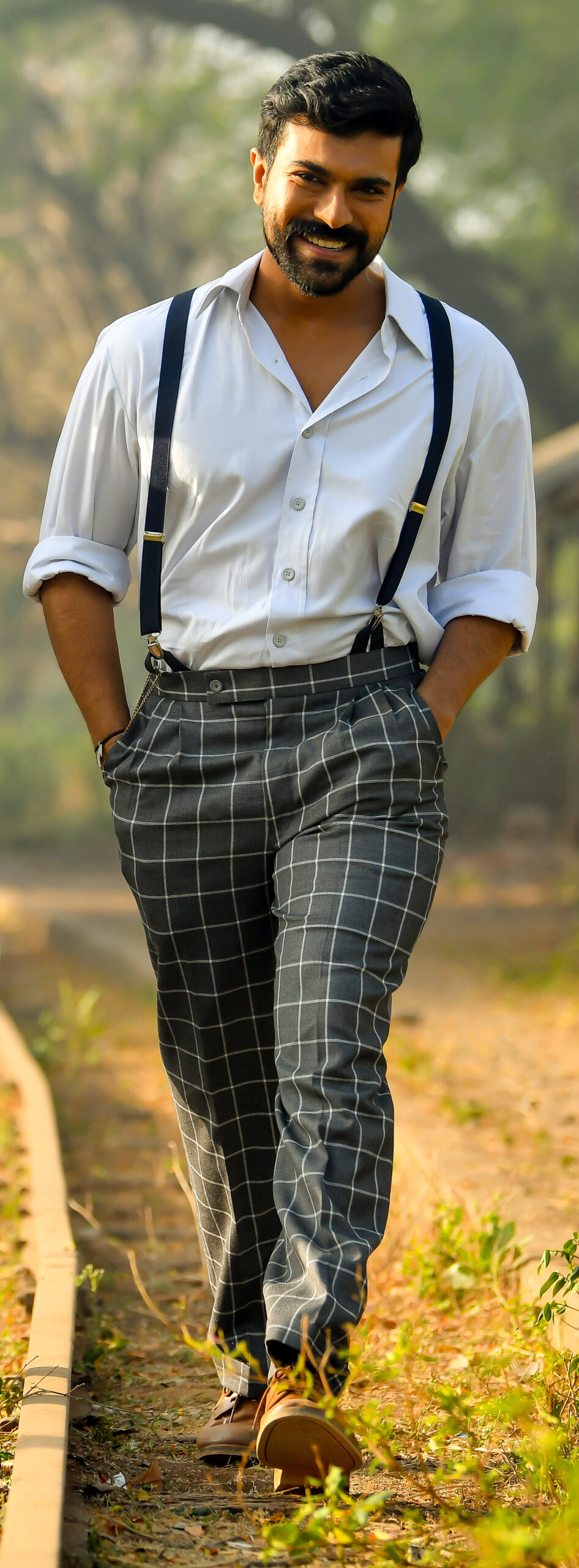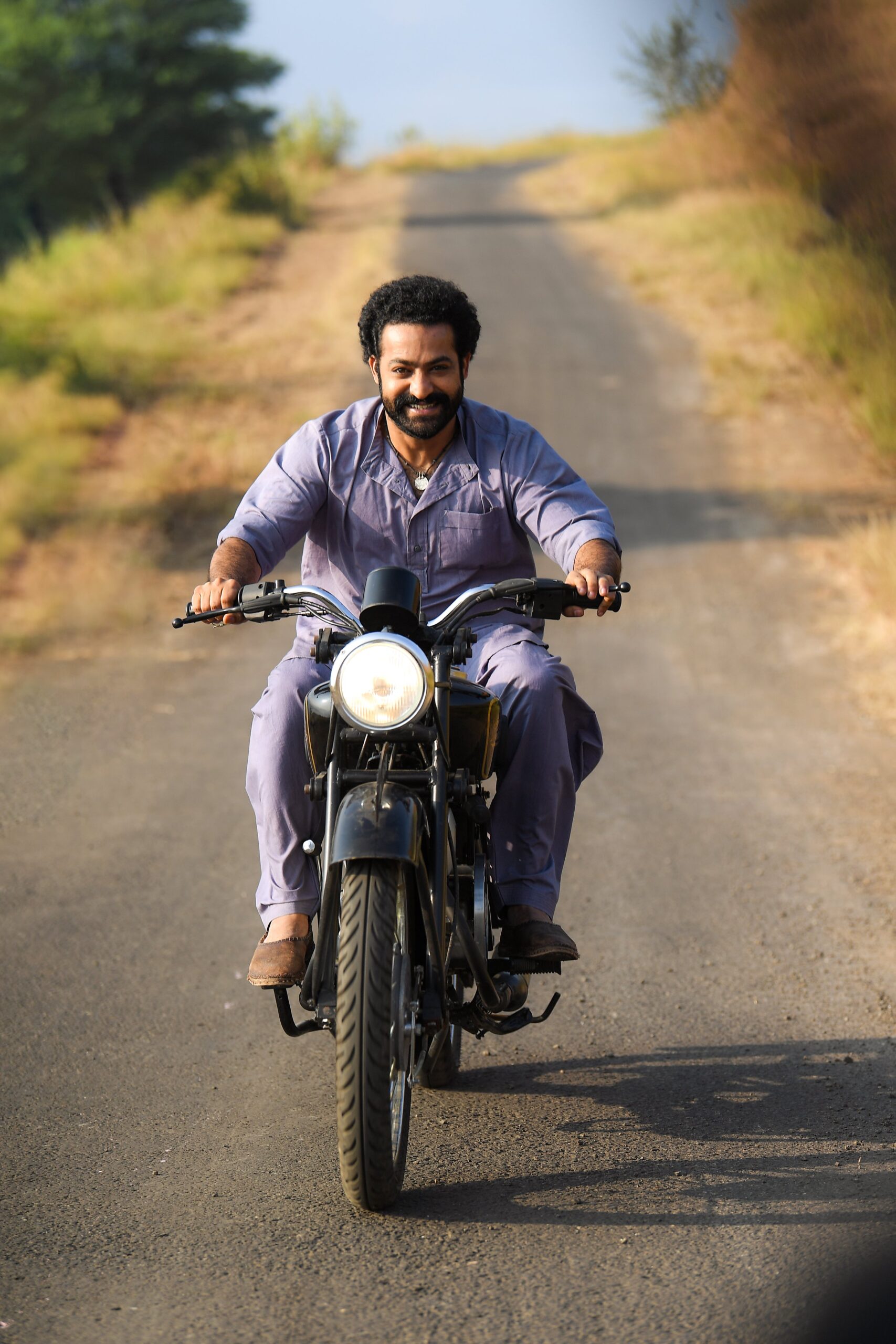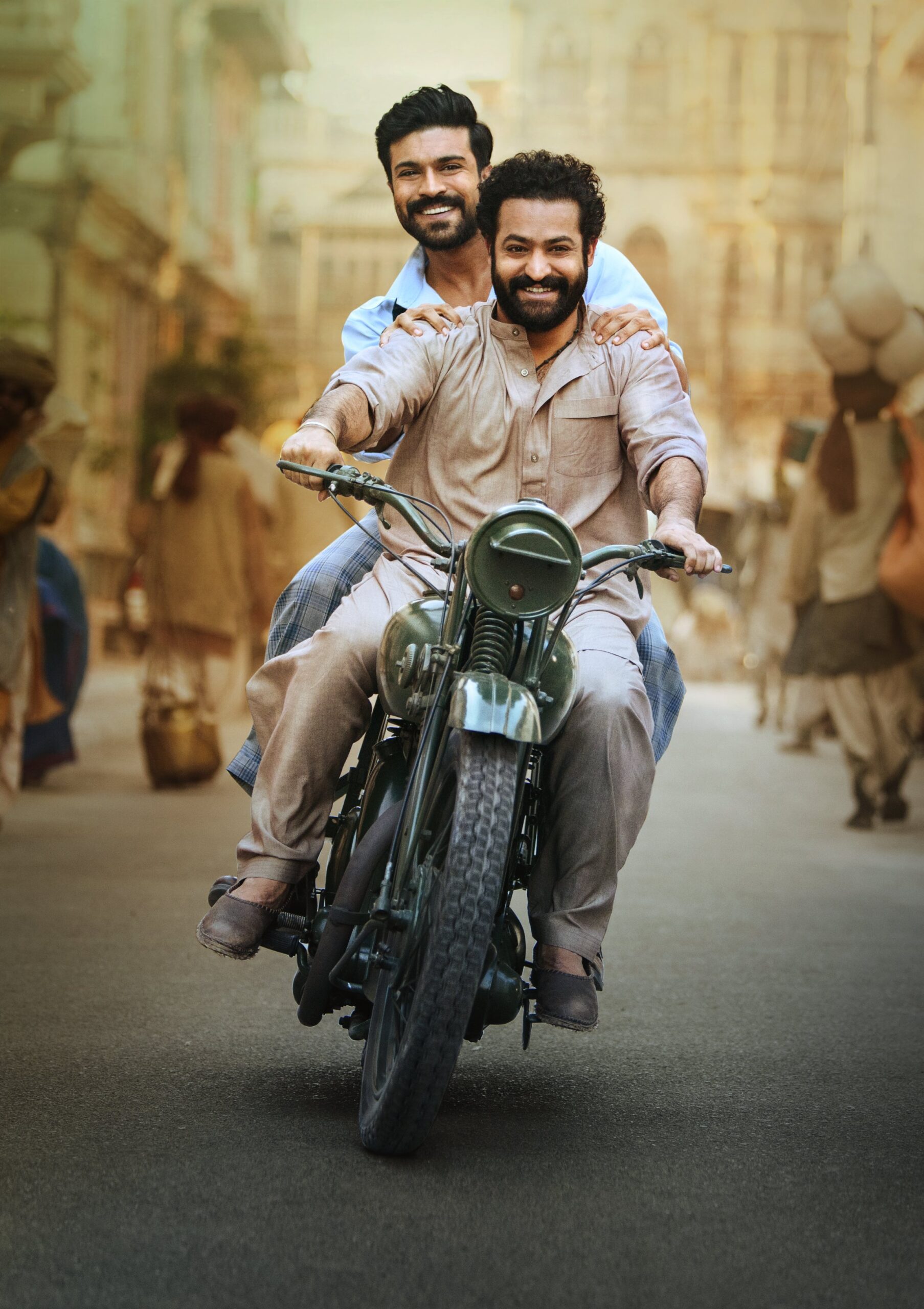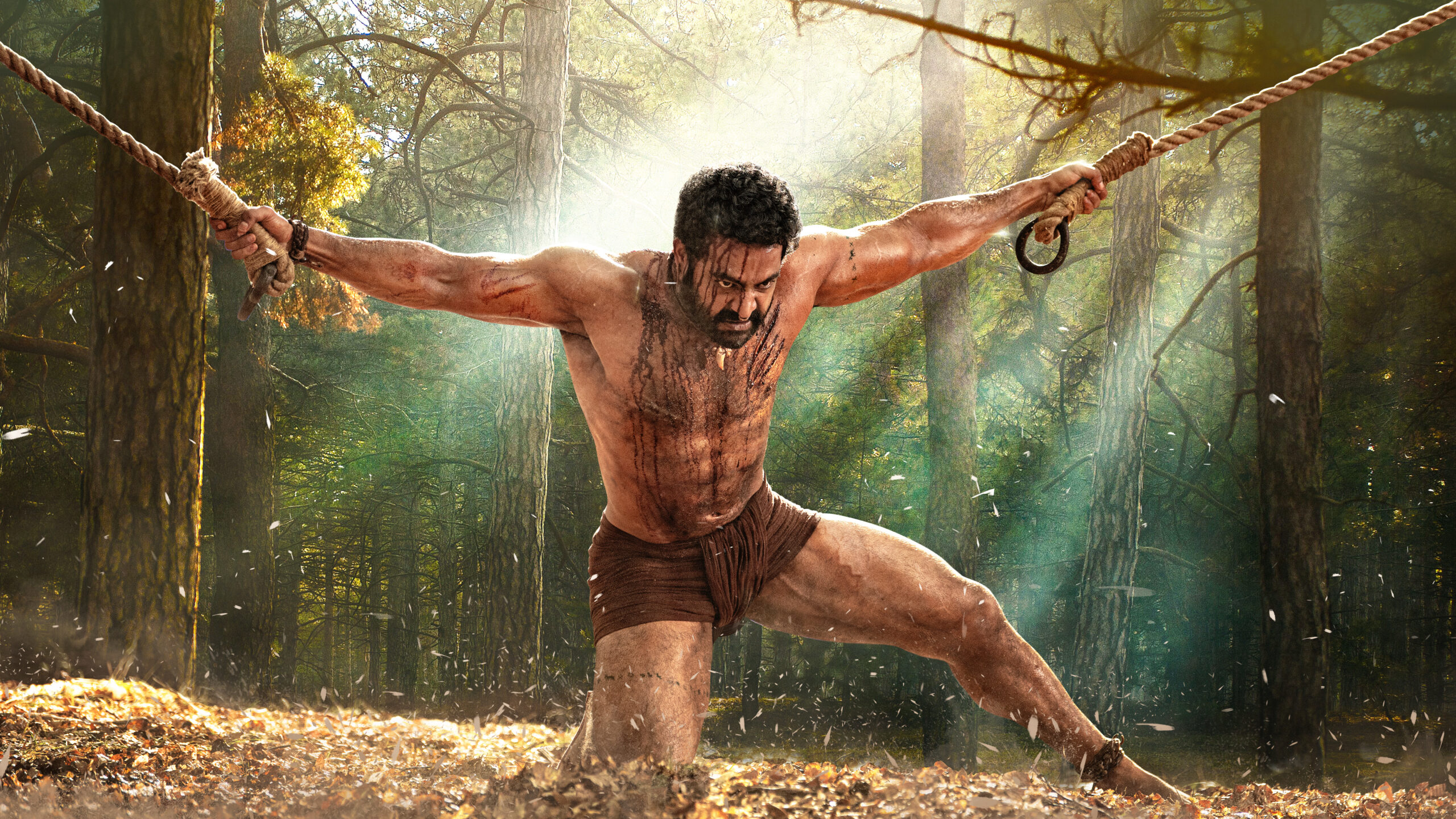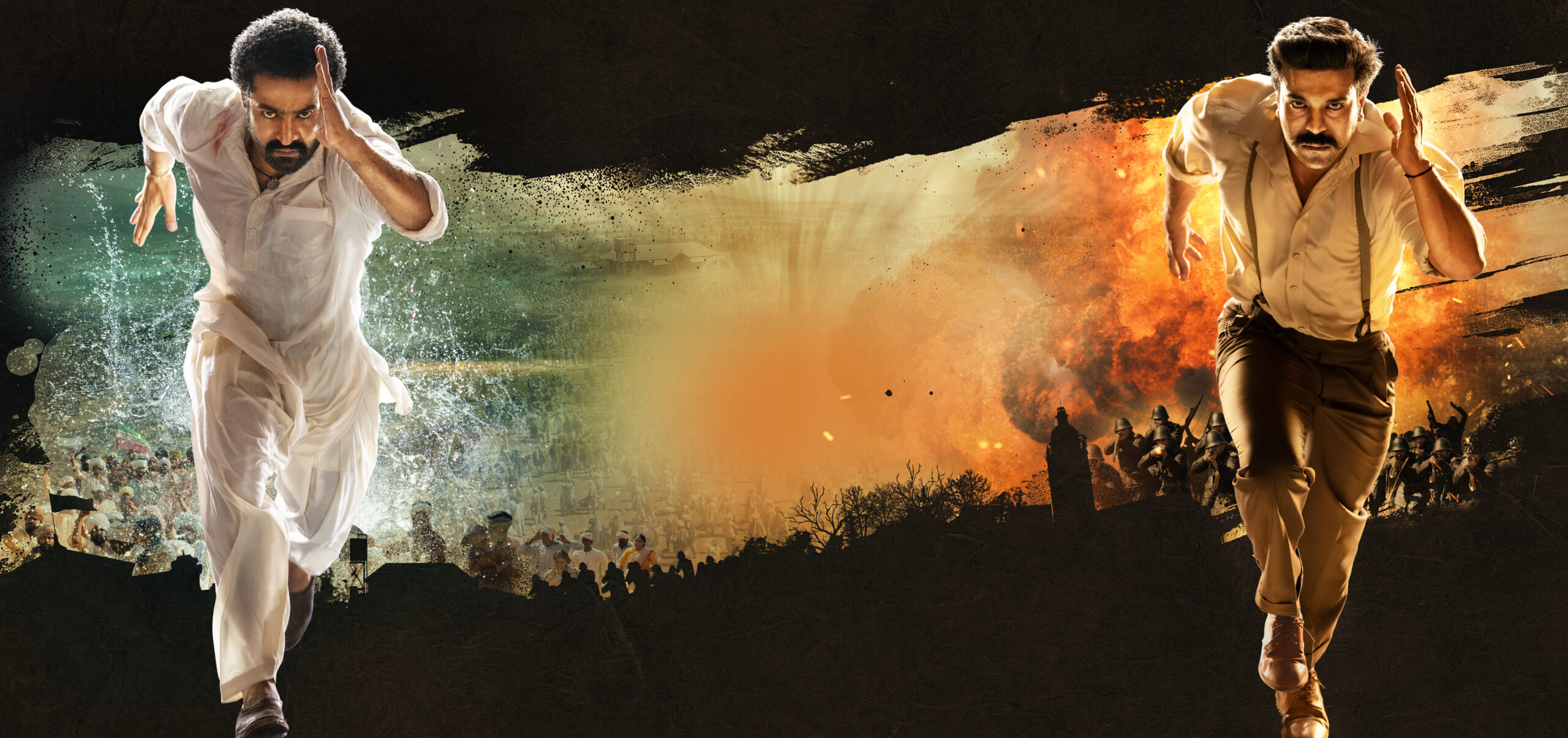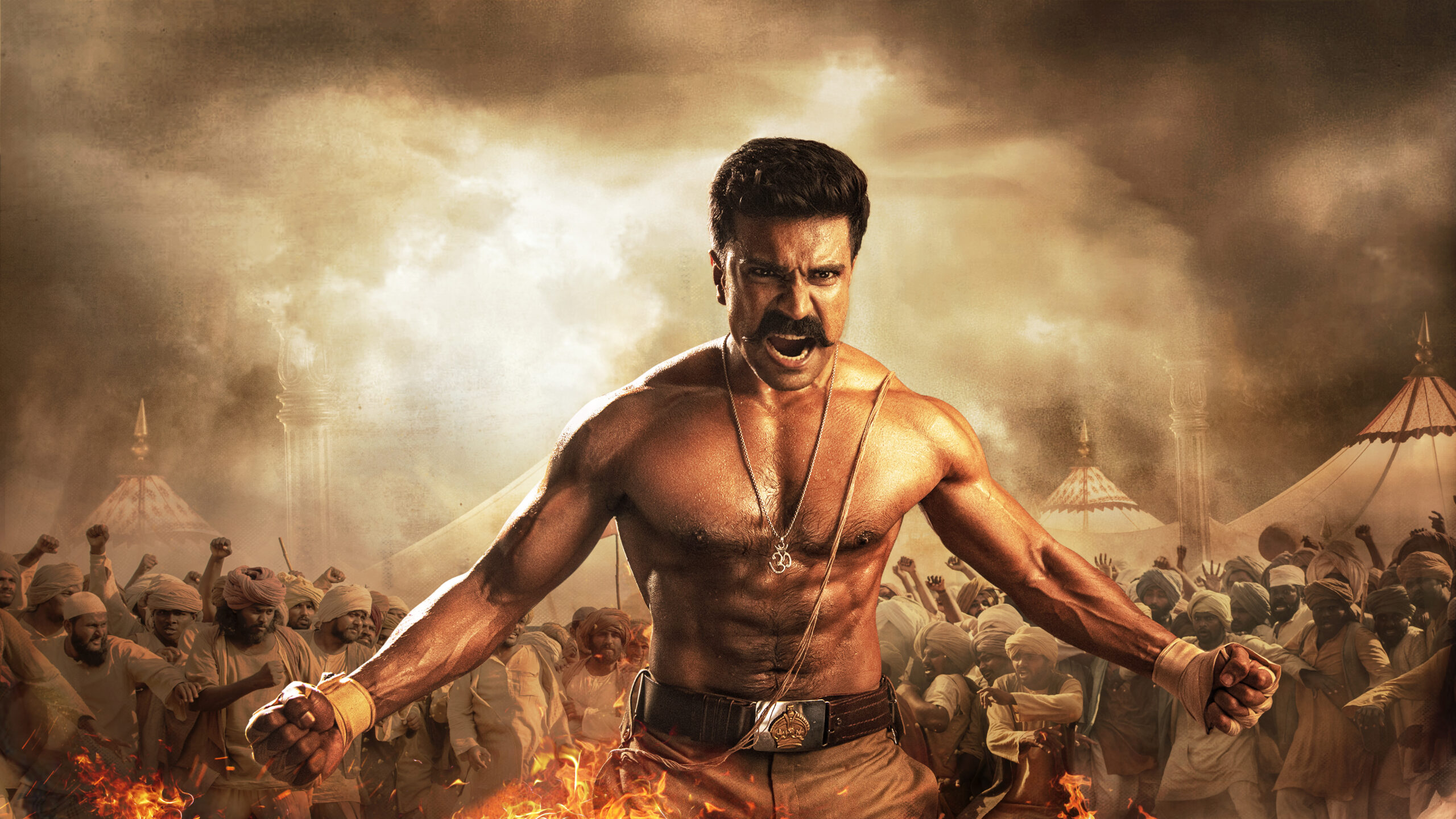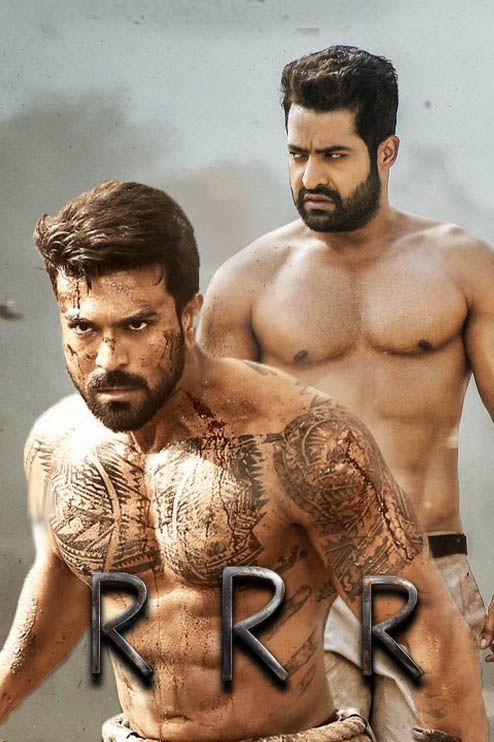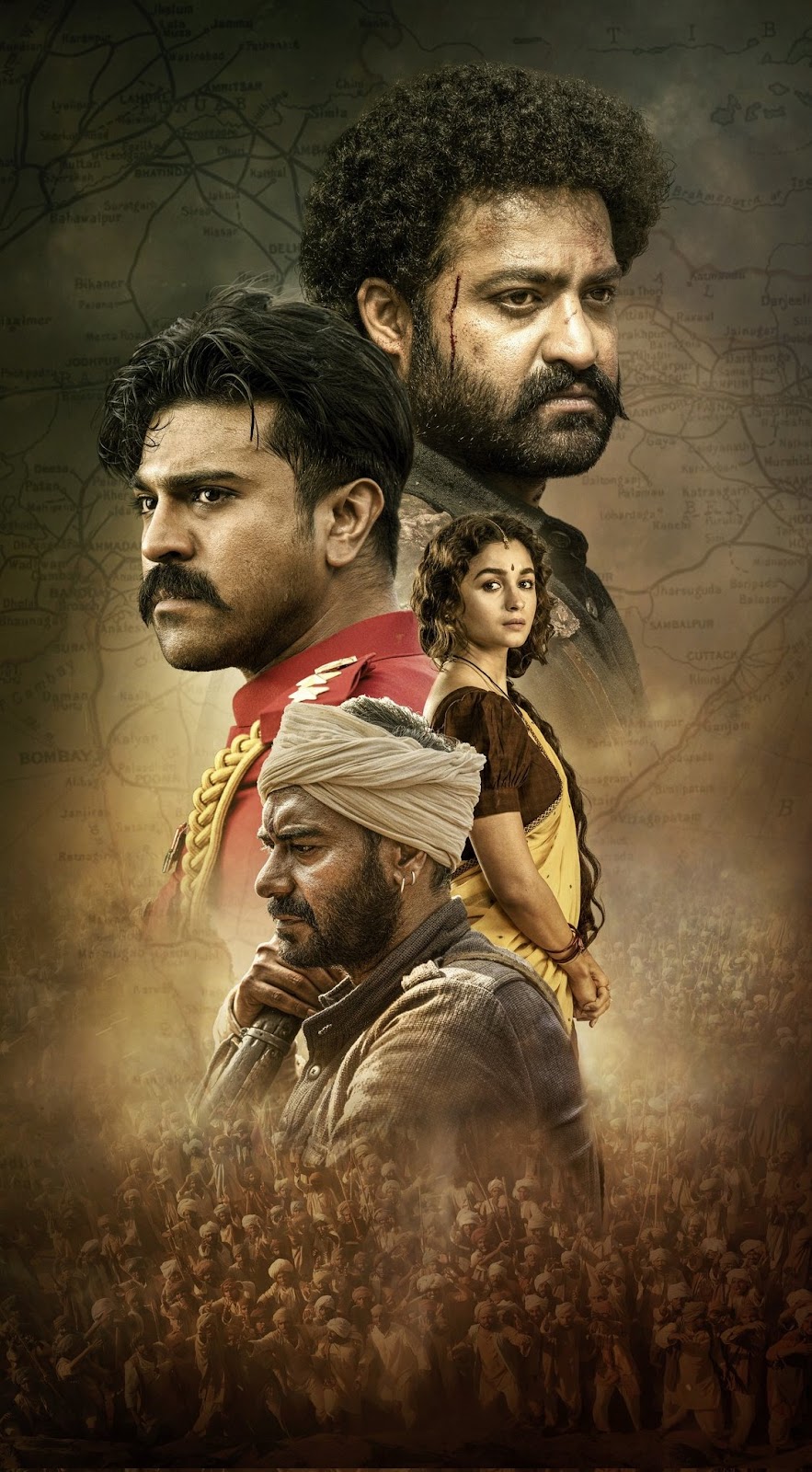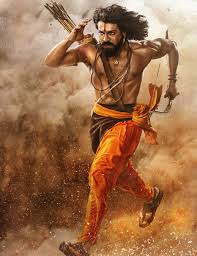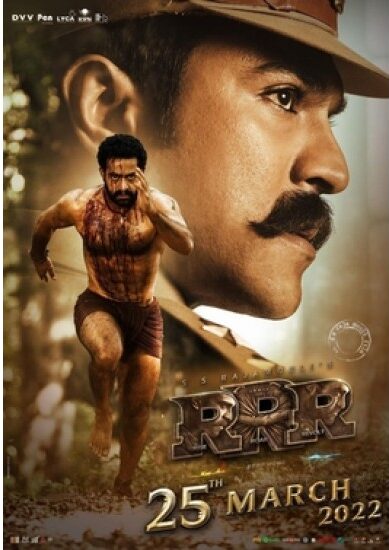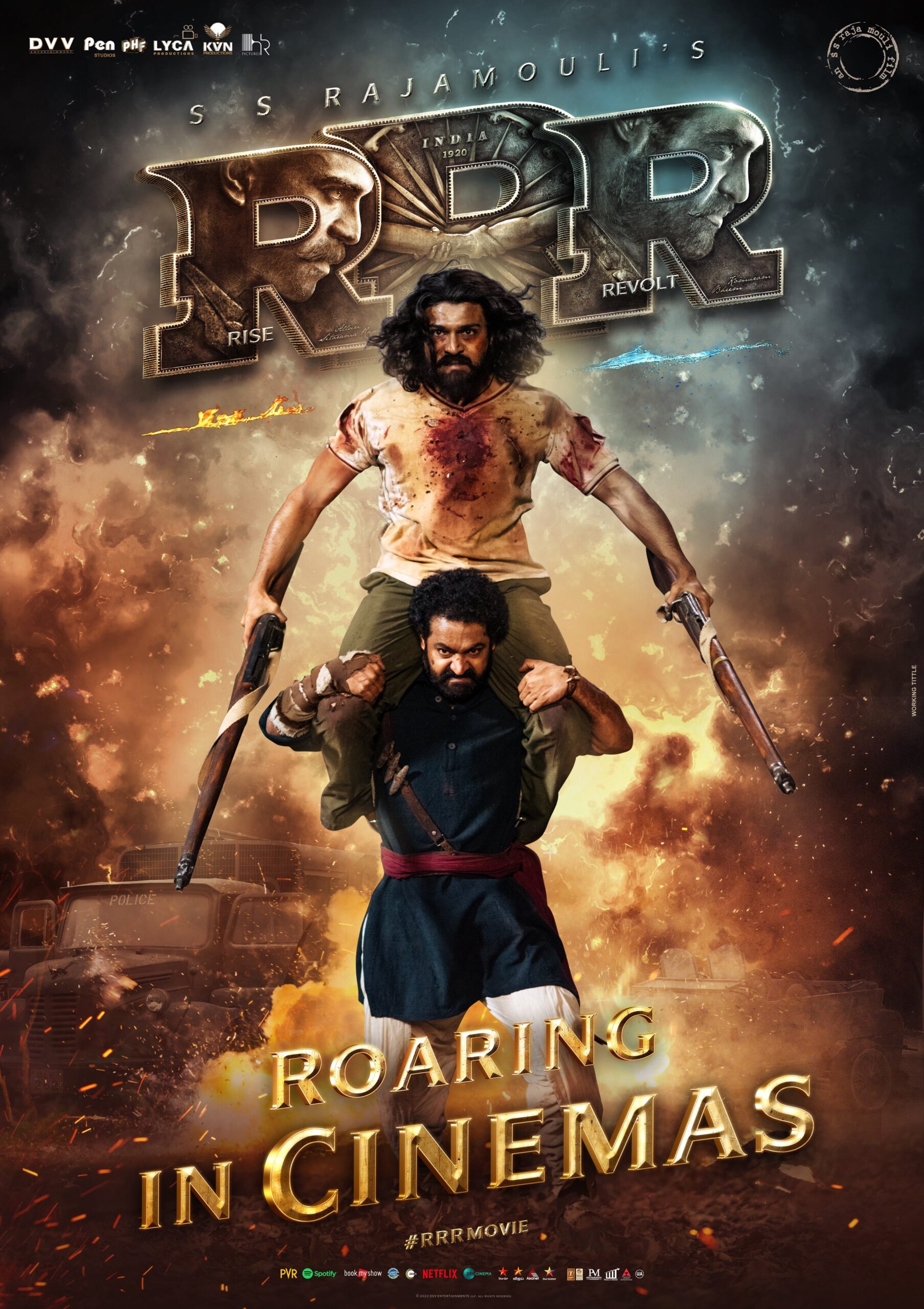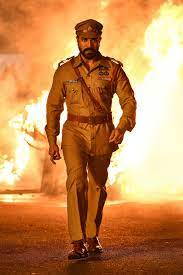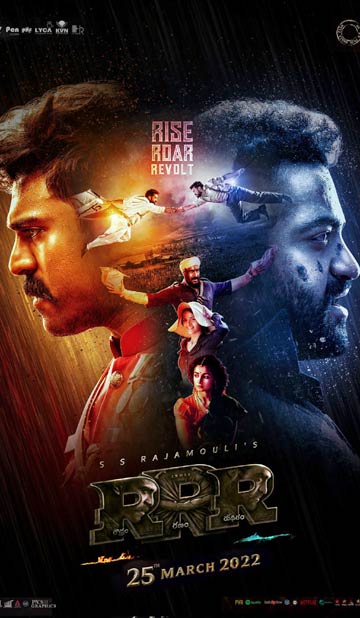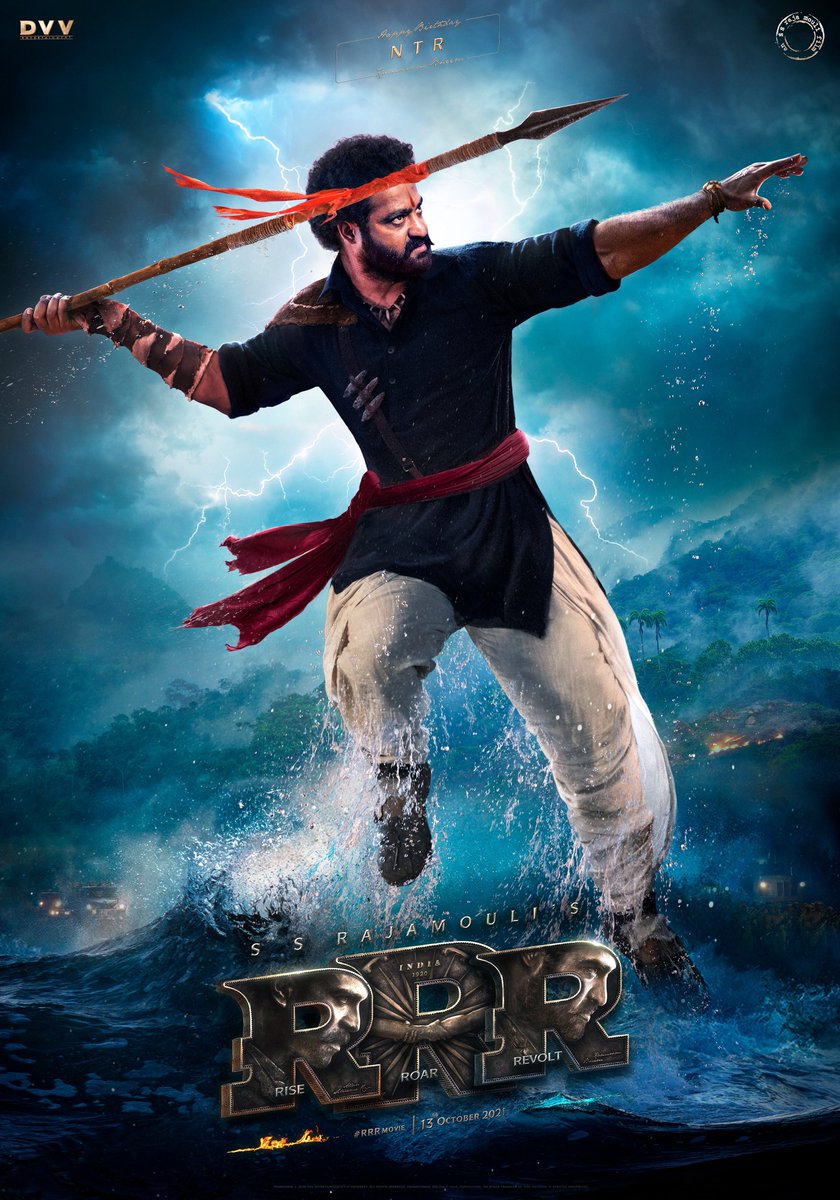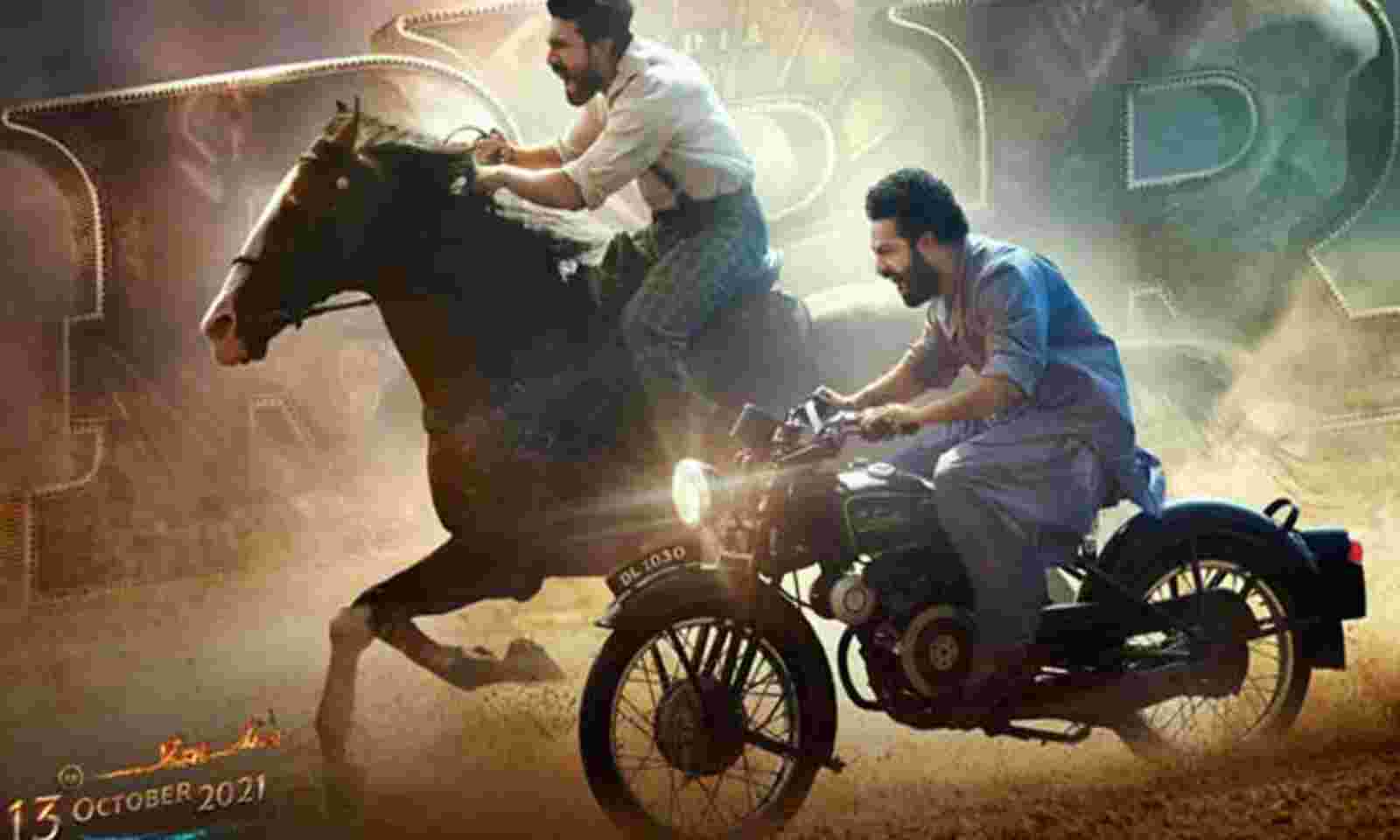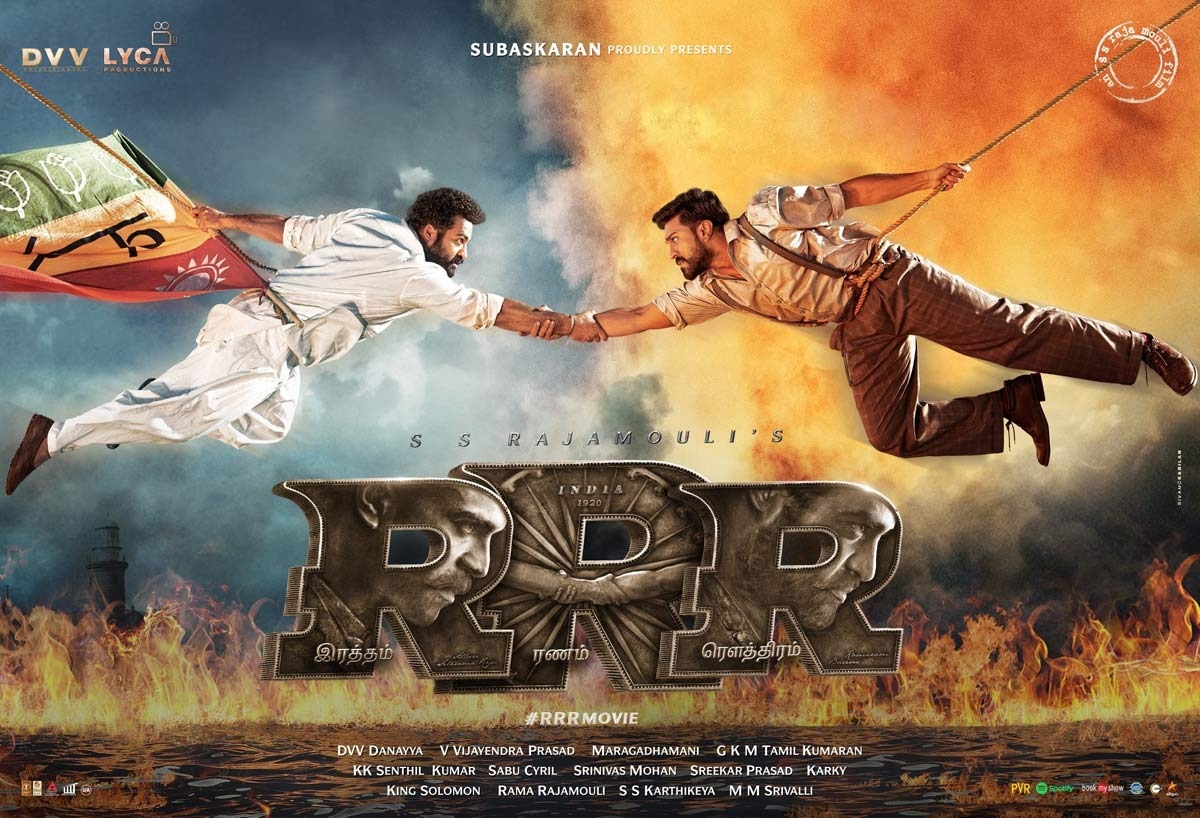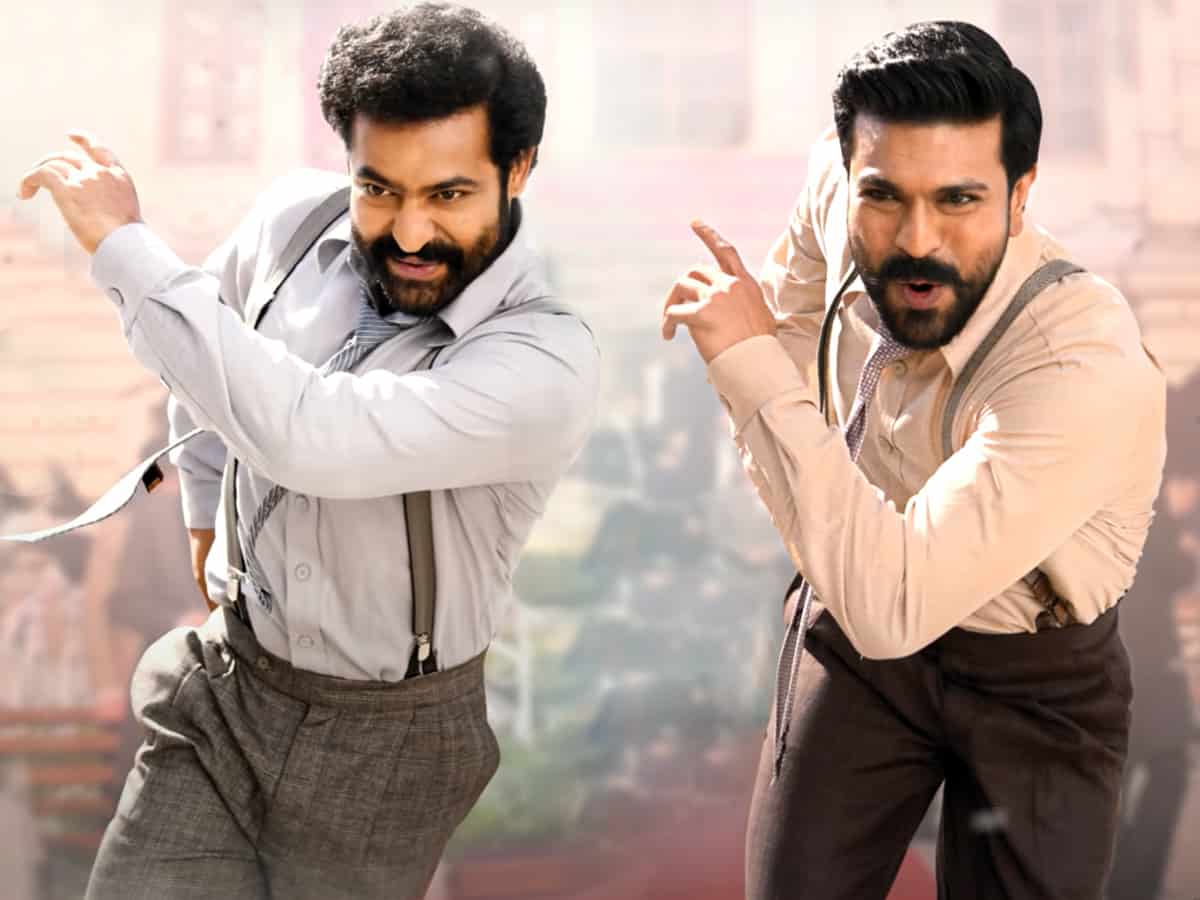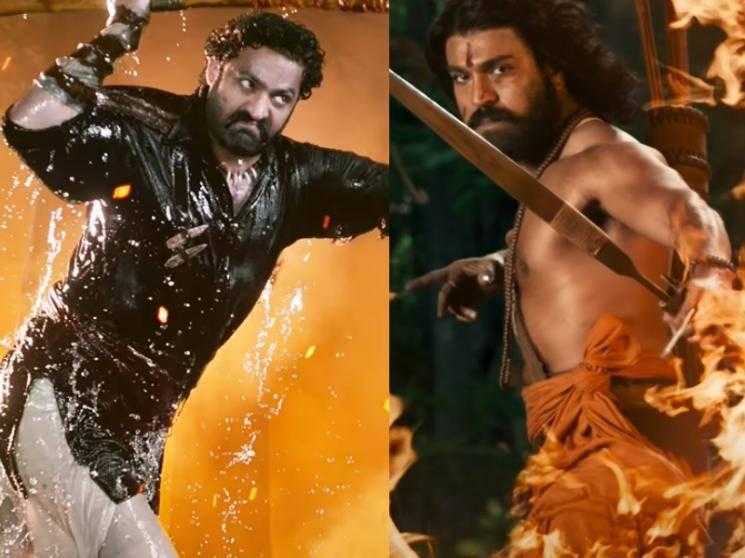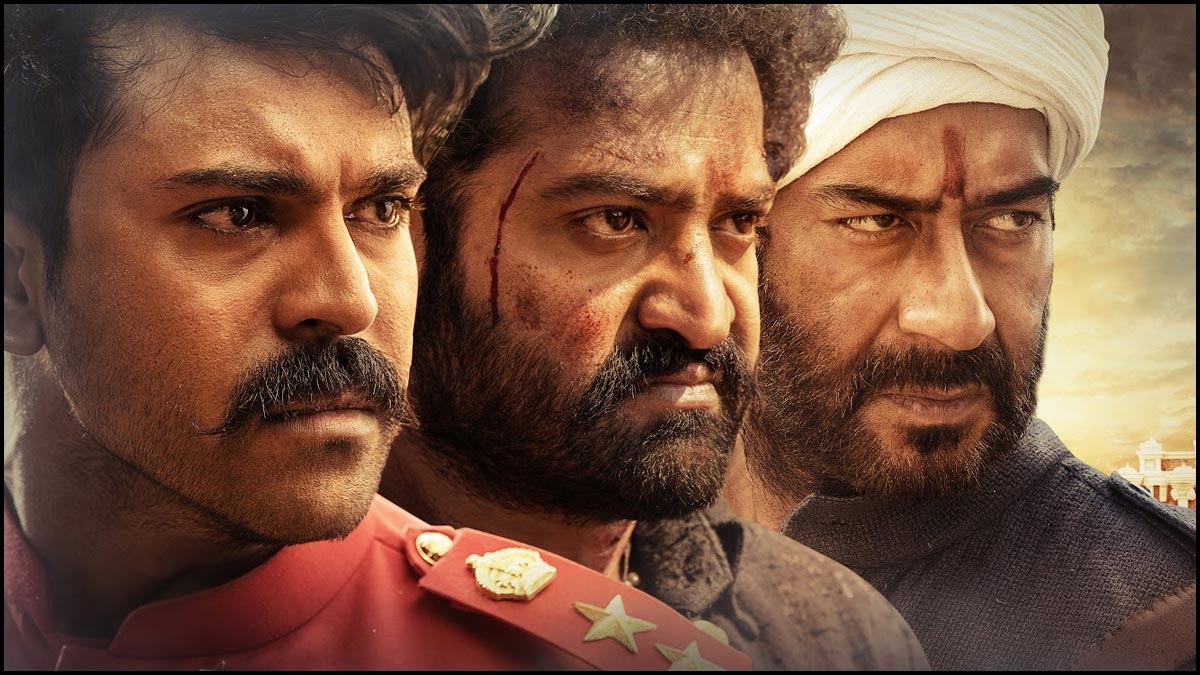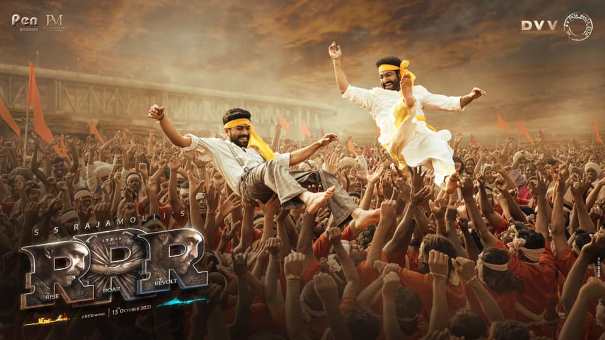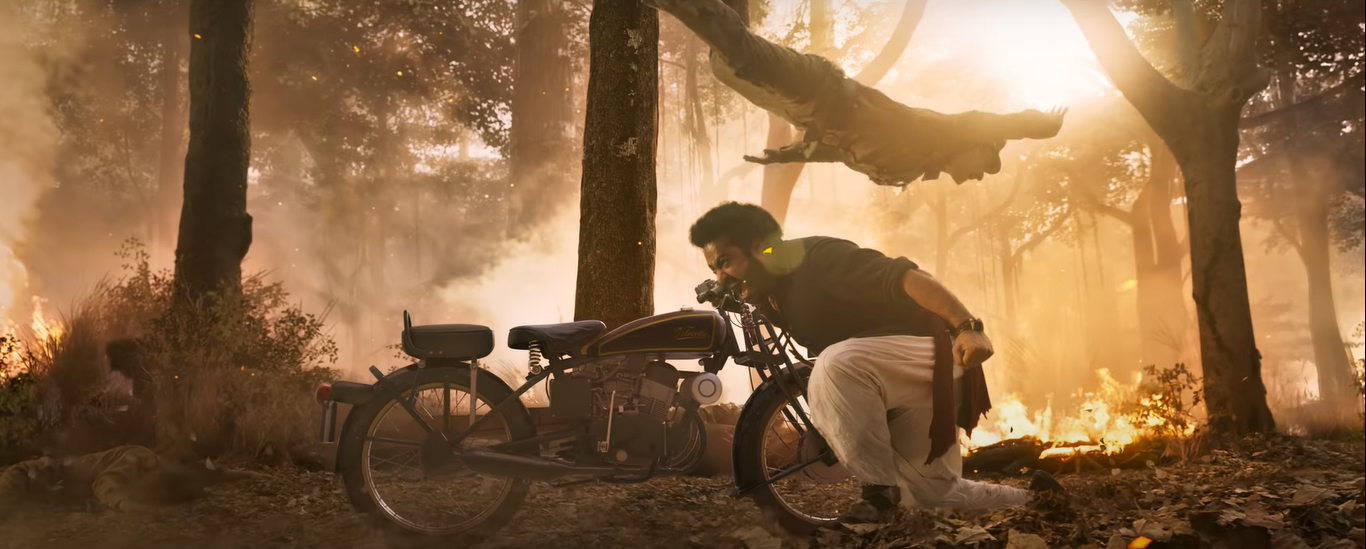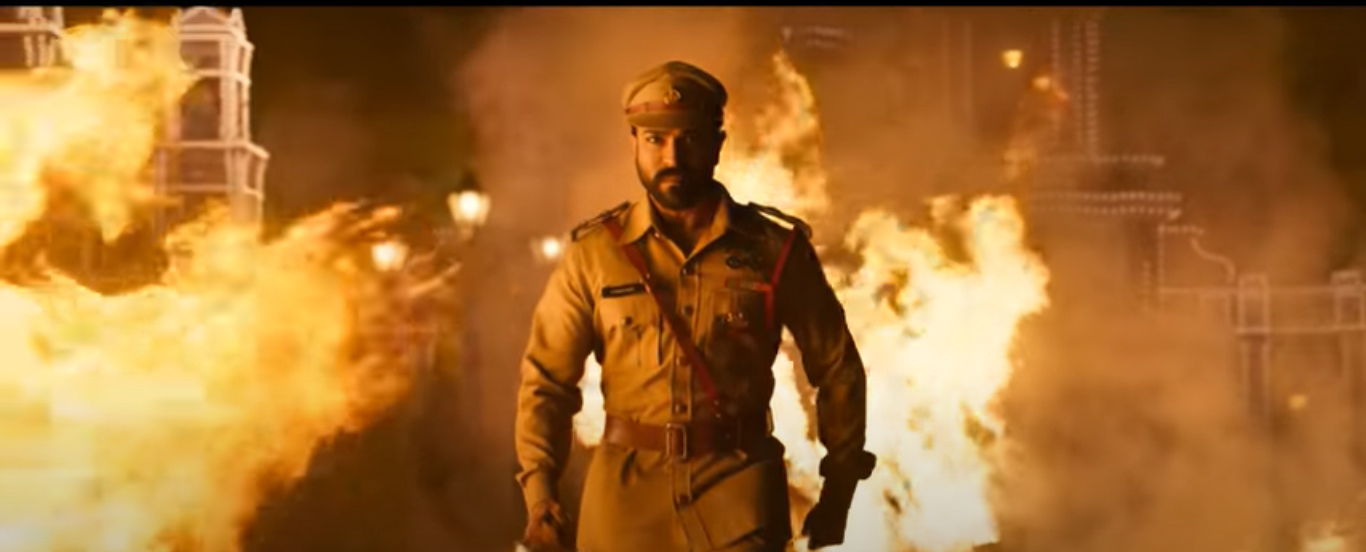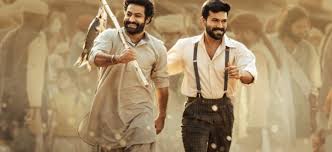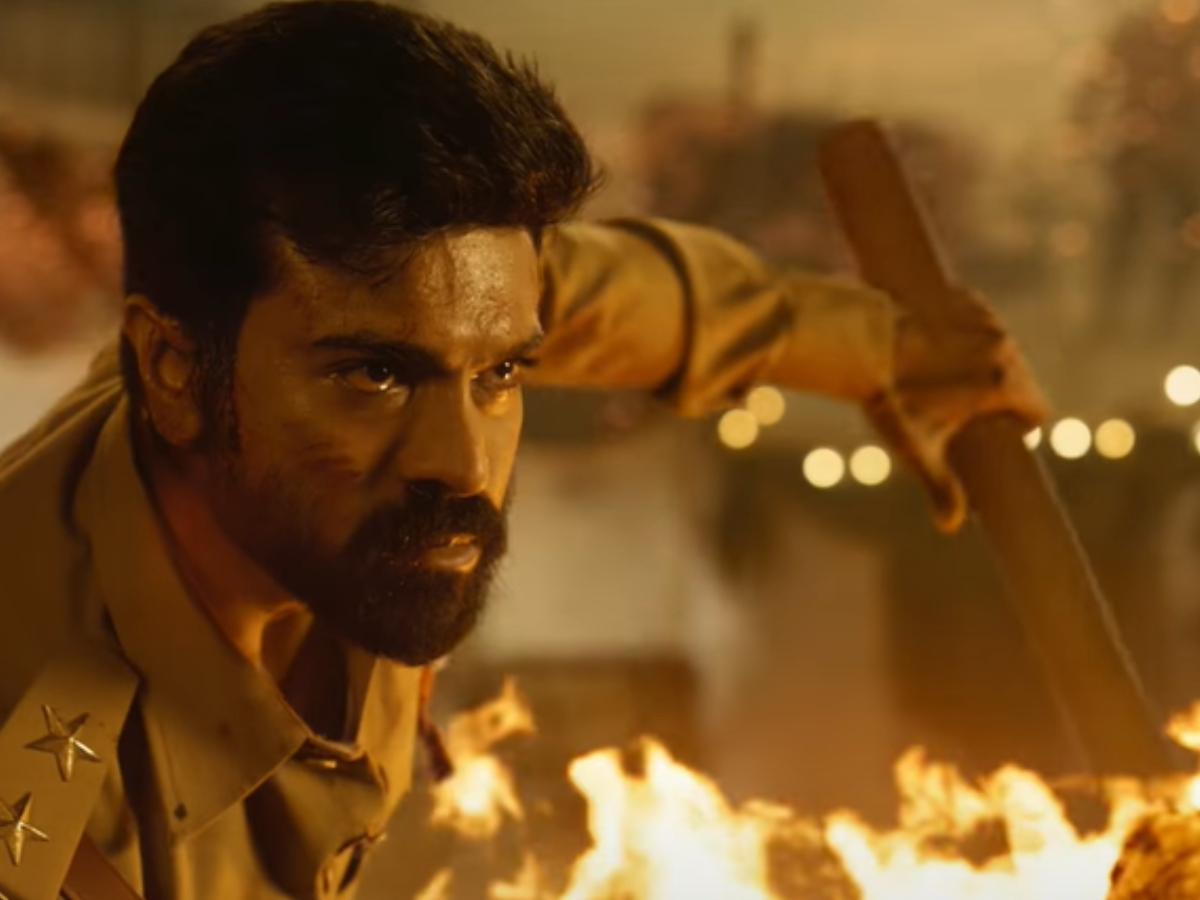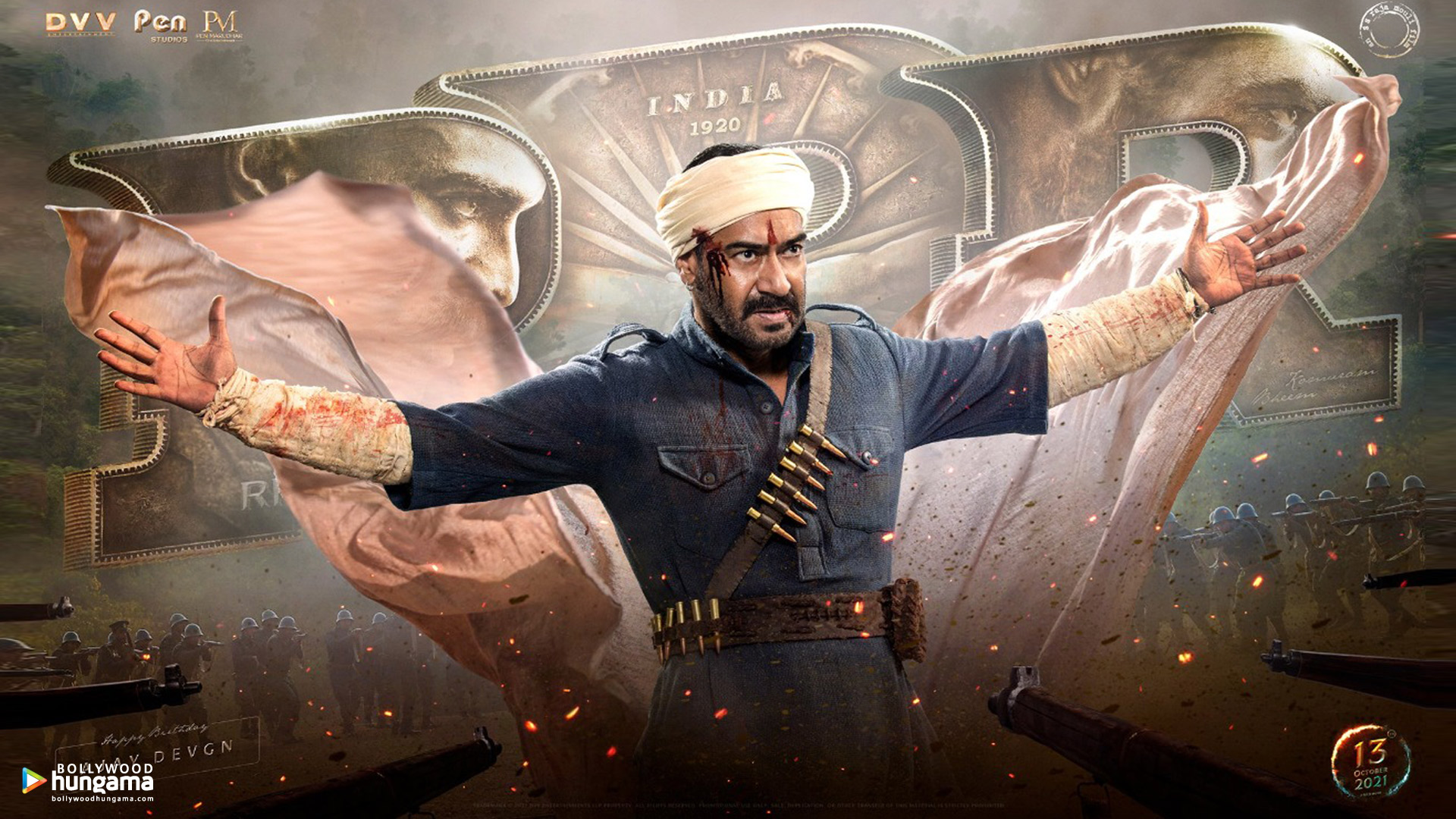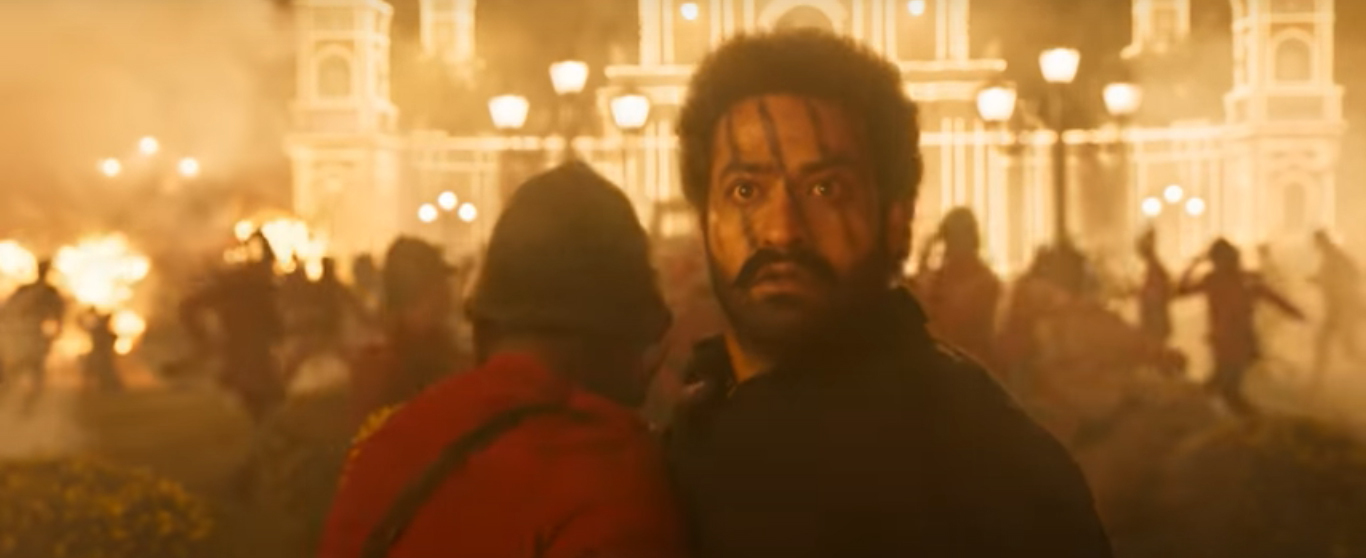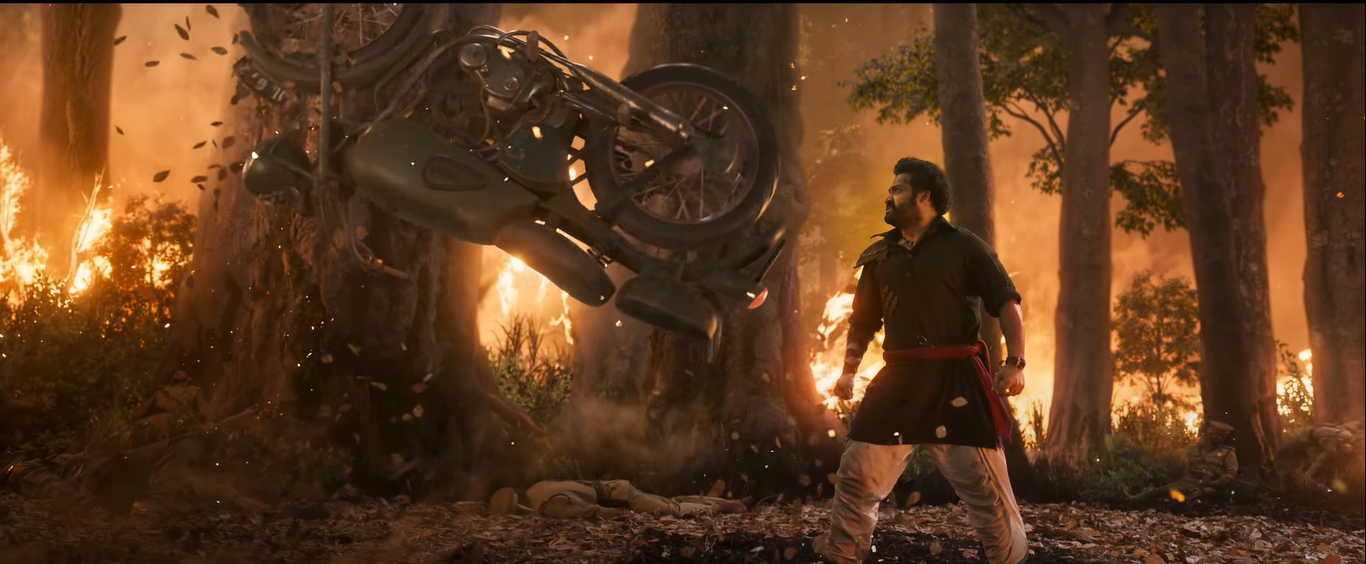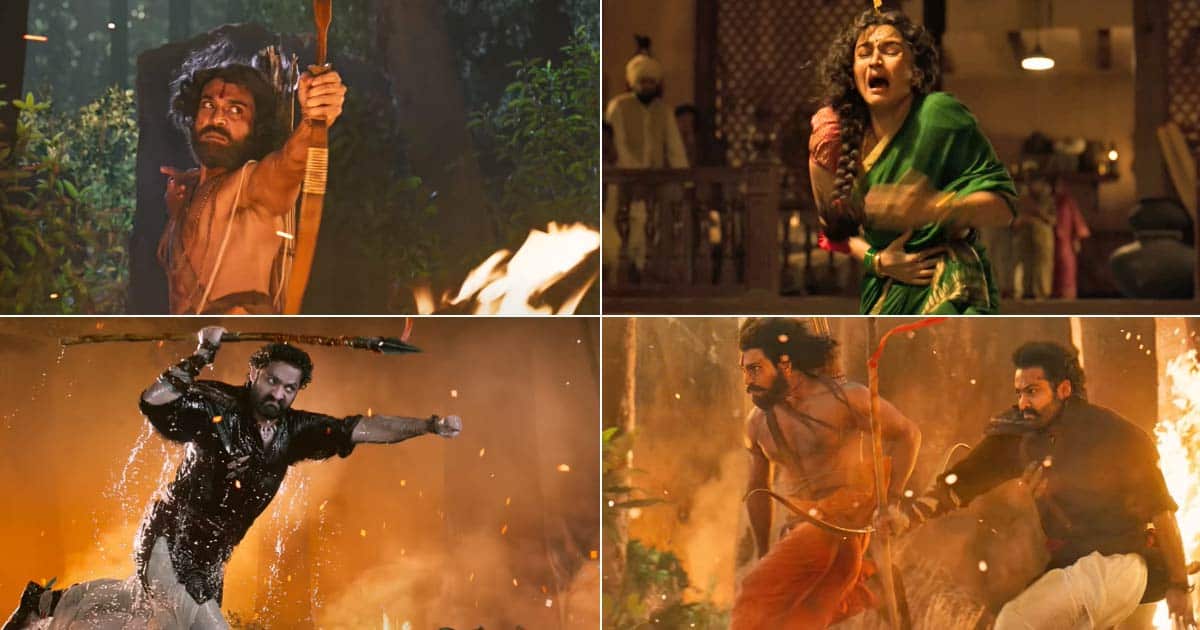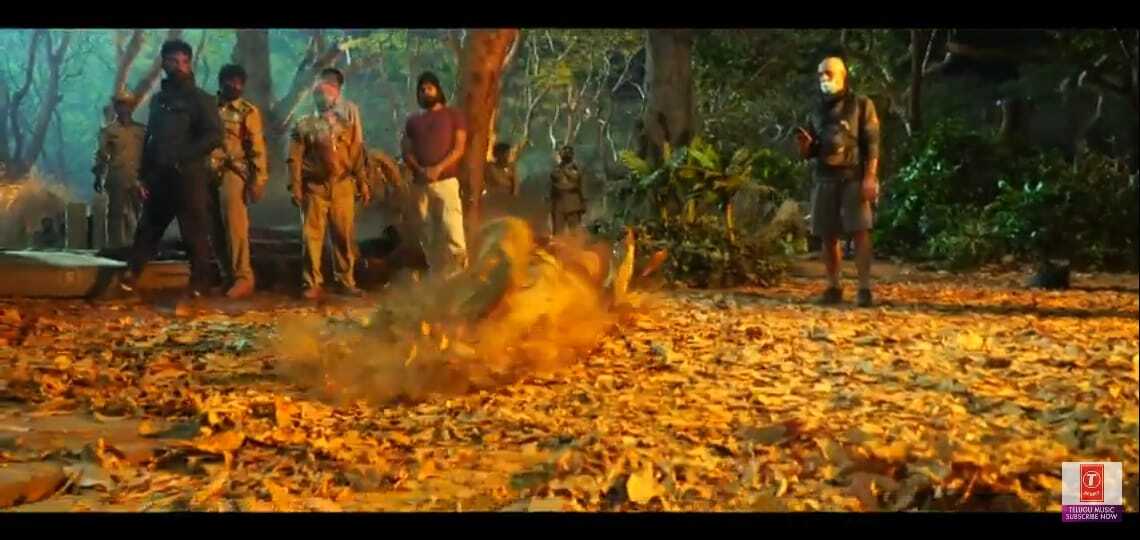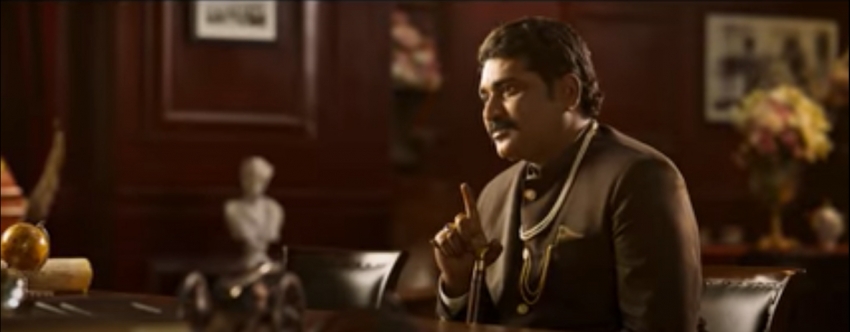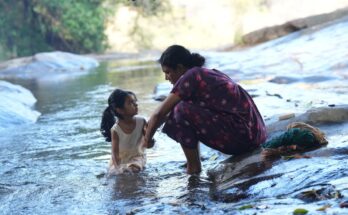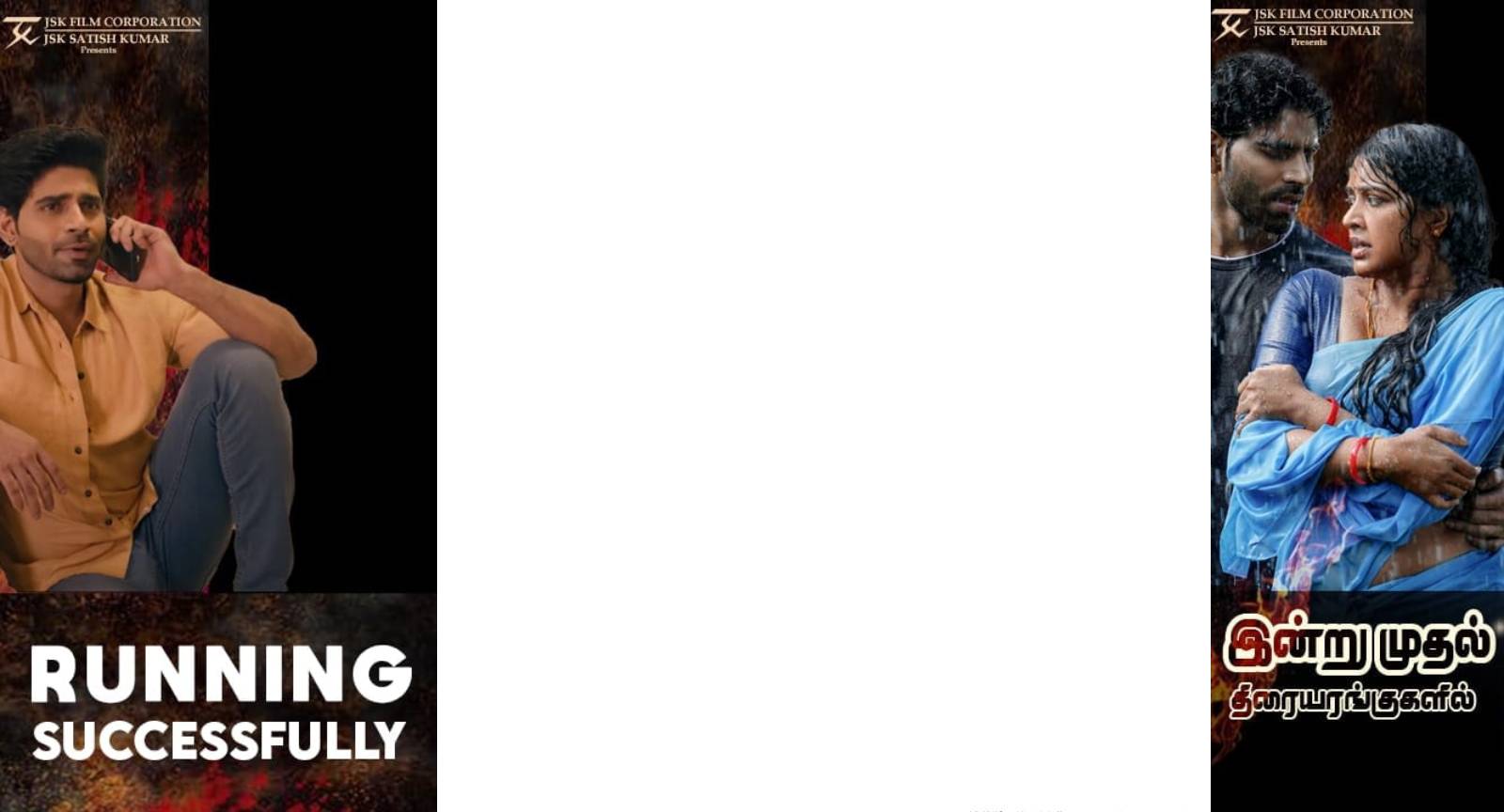” R R R ” Tamil Movie Review
Cast-;
NTRama Rao, Ram Charan, Ajay Devgn, Alia Bhatt, Olivia Morris, Alison Doody, Spandan Chaturvedi ,Shriya Saran ,Samuthirakani , Ray Stevenson , Alison Doody , Olivia Morris, Chatrapathi Sekhar , Makarand Deshpande
Rajeev Kanakala , Rahul Ramakrishna , Edward Sonnenblick , Twinkle Sharma , Chakri , and others ,
Crew-;
Screenplay & Direction : S.S. Rajamouli , Presented : D. Parvathi , Producer : DVV Danayya , Banner : DVV Ent ertainment , Story : V. Vijayendra Prasad , DOP : K.K. Senthil Kumar , Production Designer : Sabu Cyril , Music Composer : Maragadhamani , VFX Supervision: V Srinivas Mohan , Editor : Sreekar Prasad , Costume Designer : Rama Rajamouli , Line Producer ; SS Karthikeya , Post Production Line Producer – MM Srivalli , Tamil Dialogues : Karky , Sound Design : RaghuNath Kemisetty , Re-recording Mixer- Boloy Kumar Doloi, Rahul Karpe , (Pen Studios) , Tamilnadu Distribution : Lyca Productions , DI & Sound Mix : Annapurna Studios , Colorist : Shiva kumar BVR ,Music Label : Lahari Music & Tseries , PRO: Nikhil Murugan , Trailer Cut : Praveen Antony , Bran ding & Marketing : Walls and Trends and others .
Story-;
In 1920, British governor Scott and his wife Catherine visit Adilabad forest, and forcefully take away Malli, a ta lented girl from the Gond tribe to Delhi. To rescue the girl, the tribe’s protector Komaram Bheem arrives in Delhi with his men. They capture a wild tiger in the forests to aid their mission. The Nizam of Hyderabad warns Scott’s officer about Bheem’s mission. Alluri Sita Rama Raju is a police officer who proves his ability to serve the Empire. In order to get a promotion, he takes up the challenge of catching Bheem whose whereabouts remain unknown. Ram comes forward attends a meeting of independence activists and proposes to assassinate Scott. As their go als seem to align, Bheem’s aide, Lachhu, asks Ram to meet Bheem. However, Lachhu flees when he senses that Ram is a police officer. Lachhu tells Bheem about this who asks him to hide.
Ram and Bheem accidentally meet and team up to save a boy. Bheem introduces himself as a Muslim named Akh tar while Ram hides his identity as a police officer and soon, they bond with each other. Bheem comes across Sco tt’s niece Jennifer when they are trying to sneak into the governor’s palace. Ram helps Bheem to get close to her. Jennifer invites Bheem to a party that the duo attends. Impressed by his dance, Jennifer offers Bheem to visit th e palace where he silently meets Malli, assuring her rescue. Ram captures Lachhu to ask the whereabouts of the ir leader but in vain. Lachhu gets hold of a common krait and throws it onto Ram which bites him. Lacchu warns Ram that it can kill him within an hour without anti-venom, known only to the Gond people. Ram finds his way to Bheem who treats him. Bheem confesses to Ram by telling him about their mission.
Bheem and his men barge into the palace with a truck full of wild animals. Bheem unleashes them onto the pala ce guards. However, Ram obstructs him as a police officer. Bheem pleads not to arrest him but Ram does not bud ge. Furious, Bheem fights off Ram and goes on to climb the palace walls. Ram stops him while Scott holds Malli hostage at point-blank range. Bheem surrenders with no option left. Bheem is sentenced to death via a public execution. Scott offers mercy if he kneels but Bheem refuses despite heaving lashing by Ram. Bheem sings a so ng that motivates the public to rebel, and he is taken away by the officers. Ram recalls that his father Venkat Ra maraju had rebelled and sacrificed his life against the British. Venkat takes a promise from Ram that he’d deliver a weapon to every person who takes part in the rebellion.
Venkat’s friend Venkateswarulu informs Ram that his promise is going to be fulfilled since he is appointed as in charge of a shipment of arms. Ram, however, puts saving Bheem and the girl as his priority. He requests Scott to execute Bheem in the outskirts as a part of his plan. However, Scott recognises the ploy and injures him. Bheem frees himself and fights the guards off while Ram shoots and kills a guard over Malli’s head to save her. Misunde rstanding this as an attack, Bheem beats up Ram and escapes with Malli. Bheem and his men hide in Hathras but the British arrive there. Sita recognises that they are in danger and drives away the British by lying that the place is experiencing a smallpox outbreak. Sita reveals that she is Ram’s cousin and fiancé. She adds that Ram is sente nced to death as he went against the British to save his best friend. Bheem regrets his actions and promises Sita to rescue Ram.
Bheem sneaks into the Barracks with the help of a blueprint given by Jennifer. He frees Ram from the prison, taking him on his shoulder as the latter is unable to walk. Together, they fight the police and escape. Bheem tre ats Ram, however, the police attack them in the woods. Ram takes bow and arrows from a shrine of Lord Rama and retali ates. Bheem joins him with a spear. They fight off the police and head towards the palace. They blast a motorcycle into a room full of TNT, and the building explodes. Bheem retrieves guns and ammunition and delive rs it to Ram. Catherine is killed in the chaos while Scott is killed by Ram and Bheem. They reunite with Sita, Jenn ifer, and others. Upon Ram’s insistence, Bheem requests to return the favour by educating him. Ram returns to his village and delivers the weapons as promised while Bheem returns to his hamlet, reuniting Malli with her m other.
Watch The Trailor-;
Movie Review-;
There are two ways to approach RRR, unquestioningly buy into the spectacle that it offers, and two, to read it wi th the real-life characters who inspired it and examine if the film pays homage to them or destroys their legacy. It takes immense control over one’s craft to not be swayed by numbers, budget, scale, the stature of your stars and stay focused on the sole intent behind making a film, more so when you’re SS Rajamouli. That’s what sets the fil mmaker apart, he may have all the resources in his bag but it doesn’t distract him from his core purp ose – to tell a compelling story. RRR, too, is just that. The director draws you into 1920s India and never gives you a chance to take your eyes off the screen and it’s not for the visuals alone. Cutting the suspense short, the period drama is a visual spectacle with a purpose. Ever since Baahubali’s stupendous success, the quest to make a pan-Indian film has caught on across industries. But few directors have SS Rajamouli’s vision that conjures up fantas visuals that are so compelling we are drawn into the story by the sheer temerity of his ambition.
Thi s is one director who knows how to use a massive budget and give his audacious imagination a free run. In RR R, Rajamouli brings together two leading men from the Telugu film industry – Ram Charan and Junior NTR – to w eave together an imaginary tale based on real life heroes Alluri Sitarama Raju and Komaram Bheem. The first wa s a revolutionary, who was born around 1897, and fought for Adivasi rights against the British. The second was an Adivasi man from the Gond tribe who was born around 1900 and fought against the exploitation by the Niz a ms of Hyderabad and British rule. Unlike his previous films, this is a trickier terrain for SS Rajamouli, especially as he deals with a fictional story around two real-life war heroes from the Telugu land – Alluri Sitaramaraju and Komaram Bheem. The film is set in a phase where the two characters are building a foundation for the causes th ey fight for in the later years of their life. The real success of RRR is that it taps into their vulnerabilities, looks at their humane side and the emotion that drives their actions. There’s every reason for you to invest in their cont rasting journeys where the destination is more or less the same.
There is no record of the two men meeting or fighting together in real life, but RRR asks ‘What if they did?’ The st ory that brings them together is Malli, a Gond tribal girl who is forcibly separated from her family and taken to the British Governor’s house in Delhi as a ‘pet’. Komaram Bheem (Junior NTR) takes on the daunting task of brin ging her home. On the other hand, Ramaraju (Ram Charan) is a ruthless police officer under the British who nur ses secret ambitions of his own, and vows to capture Bheem who is said to be a threat to the Governor. The two men are pitted against each other though they don’t know it yet. Bheem disguises himself as Akhtar, a Muslim man, while trying to figure out where Malli is and how to get to her. Ramaraju is puzzlingly loyal to his British ma sters, beating up his Indian counterparts with no mercy. If Komaram Bheem is a mix of innocence, rage and com mitment, Sitarama Raju is a picture of poise, self-control and unwavering focus. The symbolism of water and fire adds up to the allure of their characterisation. It takes a crisis to bring them together and there’s terrific drama when the two characters realise that they’re pitted against one another.
RRR is essentially about their psychological conflict of having to choose between friendship and ambition. The on-screen camaraderie between the stars and the predictable yet tender romance between Bheem and a British girl brings lightness to the proceedings. Rajamouli’s films have that elusive quality of combining old world cine ma and its overblown sentiments with new age technology that makes everything all the more convincing. So, Komaram Bheem is introduced in an exciting tiger chase, man and beast snarling at each other, reminiscent of th e famous Baahubali and Bhallaladeva poster. Ram Charan’s Ramaraju is introduced as a violent policeman who doesn’t let an angry mob stop him from performing his duty. Just how many people were there on the sets when they shot that sequence? How did they keep track of who is to do what in the enacted chaos? It’s a mind-boggl ing effort, and there are many such moments in the film when you are agape. The first hour and a half just swee ps you off your feet and it’s all credit to the arresting storytelling, the strong establishment of interpersonal rela tionships.
It’s an understatement to say that the interval action sequence delivers a bang for your buck. Making utmost use of the visual metaphors beneath the characters, SS Rajamouli breathes fire into the narrative where the stars ge t a fine opportunity to unleash the wild beast in them. The film offers something for everyone – the emotion, the dances, the action and the performances. Both the micro and macro detailing are done right.There was some co ncern when the promos of the film came out that it would fan Islamophobia, considering Komaram Bheem foug ht against the Nizam rule, and he was seen dressed as a Muslim in the film’s teaser. But Rajamouli seems to have had the opposite idea in his mind while developing the story. The Nizam is hardly in the picture, and Rajamouli goes out of the way to project an idea of Hindu-Muslim unity by having ‘Akhtar’ (the alias used by Bheem) and Ramaraju shake hands in a wildly inventive mid-air meeting (and to underline the point, the words ‘India 1920’ appear on screen).
Is it historical distortion? Most definitely so, and there’s plenty more of it in the film that I’m The second hour focuses on the transformation of Rama Raju and how he and Bheem rise above their differences, marching to wards a common goal. The momentum dips to a certain extent in the latter portions owing to the length. The flashback explains the basis behind Rama Raju’s present-day actions. Predictability is an issue that affects the film for a while though the performances and the slick treatment keep you engrossed. The director, as a parting gift in the climax, even showcases Alluri in the saffron-clad avatar that everyone in the Telugu land is familiar wi th. Of course, there are abundant mythological parallels – Ram’s love interest is Sita and Bheem is almost a Han uman bringing the two together.There are two ways to approach RRR – one, unquestioningly buy into the spec tacle that it offers, and two, to read it with the real-life characters who inspired it and examine if the film pays homage to them or destroys their legacy.
As a reviewer, I’m torn between my impulse to just enjoy the experience and my awareness of the power of cin ema to rewrite narratives. So, let me attempt to do both. In the case of Jr NTR, the casting is pitch-perfect. He de livers exactly what’s expected of him in a raw, effective and intense performance. If you’re looking for surpr ises in RRR though, it comes through Ram Charan, whose career-best act is an authoritative, composed and steely portrayal of Alluri. Despite her brief presence, Alia Bhatt’s performance is utilised well in the key moments of t he narrative. Ajay Devgn’s special appearance is another asset to RRR and the conviction with which the veter an plays his part is an integral add-on to the film’s impact. Olivia Morris is charming while she lasts and the other actors Rahul Ramakrishna, Samuthirakani, Rajeev Kanakala, Shriya Saran and Edward Sonnenblick complement the leads with their assured performances. One of Rajamouli’s great talents is to pick small, ordinary moments and cast them on a magnified scale to suddenly overwhelm the unsuspecting viewer.
In one scene, Ramaraju is taken aback when he sees Akhtar eating with his left hand it is linked to a mundane sc ene from his childhood that comes much later, but when you make that connection between the two, you’re all at once hit by a wave of sentiment that you didn’t think you harboured. In another such example, you see Rama raju carry Akhtar on his back when the latter is tired – the roles are reversed in a later scene which is set in a com pletely different context. It must be said that the decibel levels of the background score are consistently high, th e music almost tells you what you’re supposed to feel. Yet, you can’t marvel enough at how a mass number like Naatu Naatu finds a way into the film – a perfect context always enhances the impact of music, just like in this ca se. Similarly, with Komuram Bheemudo, a slow-paced emotional song inspires a crowd to fight for one among th em and not be mute spectators. The production design and the cinematography are the backbones of any period film and Sabu Cyril, Senthil Kumar are successful in taking you back in time.
The friendship between the two men is built through such seemingly simple writing. Ramaraju is the sophisticat ed man of the world while Akhtar is the simpleton who adores the former. Neither of them suspects that the oth er is not who he claims to be. The bonhomie between the two is enjoyable, and the ‘Nattu’ song (MM Keeravani) is nothing short of explosive. I drank a bottle full of water on their behalf when it came to an end. RRR is an extre mely well-made period drama that plays to the galleries and still doesn’t forget its purpose of telling a gripping st ory. Jr NTR, Ram Charan come up with fantastic performances and become one with their iconic characters. SS Rajamouli is bettering himself from film to film and the narrative control he has with RRR is even better than Ba ahubali. The outlandish interval block has Rajamouli’s stamp all over it. It’s so over-the-top but you buy into it because he places such high stakes in the game. Olivia Morris as Jenny, a kind-hearted British woman, is graceful and charming, and shares an easygoing chemistry with Junior NTR’s Akhtar.
Alia Bhatt as Seetha, however, is miscast and wasted in the film. Shriya Saran as young Ramaraju’s mother also looks out of place. Both look like they’ve lived in air conditioning from the time of their birth, forget surviving a hard life in pre-Independent India. You really miss the fiery women of Baahubali, and the fresh flavour that they brought to the narrative. Ajay Devgn is barely able to lip sync in Telugu, and since he has a crucial role to play in Ramaraju’s story, it drags the film down. The second half loses steam in parts because of these factors. Nick Po well’s stunning stunt choreography, however, manages to pull us back in whenever the interest flags.Coming to the cerebral part of my job: how problematic is the film’s appropriation of two real-life heroes? Creative liberties may be a filmmaker’s privilege, but to what extent can those be taken, especially when the characters are seld om represented on screen? Komaram Bheem is an icon to the Gond tribe, and he was also closely associated wi th the movement for Telangana statehood.
His slogan ‘Jal, Jangal, Zameen’ (Water, Forest, Land) symbolised the movement for Adivasi rights. Yet, RRR po rtr ays him as a simple tribesman who even says, “I’m just a tribal who came in search of Malli, I didn’t understa nd his (Ramaraju’s) struggle for this land”, thereby reducing his political struggle to an abduction drama. Tribal communities have their own belief systems and culture, but this is nowhere represented in the film. Bheem of RRR worships the Shiva lingam and Rama, speaks only Telugu and Hindi, and has no understanding of activism. The slogan ‘Jal, Jangal Zameen’ appears in a flashy song at the end of the film as the credits roll, like an after thou ght, when it was what defined Bheem’s politics. RRR is just the kind of visual treat that will bring people back to theatres. As a fan of cinema, I’m overjoyed, but I also have the niggling worry that this very reason may bury the real story under the glitz and glamour of the cinematic version. Similarly, Alluri Sitarama Raju is recast as Lord Ram, wearing the janeu of a Kshatriya man, dressed in saffron and shooting arrows at the British.’
In real life, Alluri Sitarama Raju reportedly became a sanyasin and is depicted with saffron robes in statues and illustrations because of this; his close identification with Lord Ram, however, appears to be a creative liberty ta ken by the filmmaker. His romance with Seetha also seems to be a according to the sketchy details known of his life, Seetha was supposedly his friend’s sister whom he considered to be his own, and it was after her death that he prefixed ‘Sita’ to his name. If this is indeed the case, the romance seems to have been force-fitted to suit a Ra ma-Seetha narrative. Further, Alluri Sitarama Raju was not an Adivasi man but he was deeply engaged with Adi vasi rights, particularly around land and agriculture. He is credited with leading the Rampa Rebellion of 1922 ag ainst the British, protesting the legal system that deprived the tribal people of their rights. In RRR, however, he is projected as the saviour Lord Ram – an irony when Adivasi cultures have for long been threatened with erasure by mainstream Hindu society, and have been protesting the appropriation of their symbols, beliefs, and express ions.’
This leads me to wonder why Rajamouli had to pick these icons if he wasn’t willing to engage with the politics th at they represent. Beyond the grandeur of the film, isn’t it insulting to their memory that what they stood for has been diluted thus? Wouldn’t the film have worked if he had chosen two entirely fictional characters and set them in this premise? Sure, in superhero cinematic universes, we have one superhero meet and battle it out with ano ther. But can such a crossover be done sensitively when we’re speaking of real-life people who represent such st ories of oppression MM Kreem completes the mystical trio of Rajamouli-Prasad-Kreem to give a ‘seat shaking’ experience taking care of your ears & strings of your heart. Usually, a film of this stature forgets to sound good along with looking good but once you’ve Kreem on board, you can just sit behind and milk the cream (okay, I was very tempted to do that).All said and done, RRR is what every ‘grand’ film before this aimed at being but couldn’t be because we’ve just one SS Rajamouli after all. This lives up to all the hype of ‘what’s next after Baahubali with even bettering that for me.
This IS MY Personal Review So Please Go And Watch The Movie In Theaters Only
Written By- T.H.PRASAD -B4U-Ratting-3 /5
